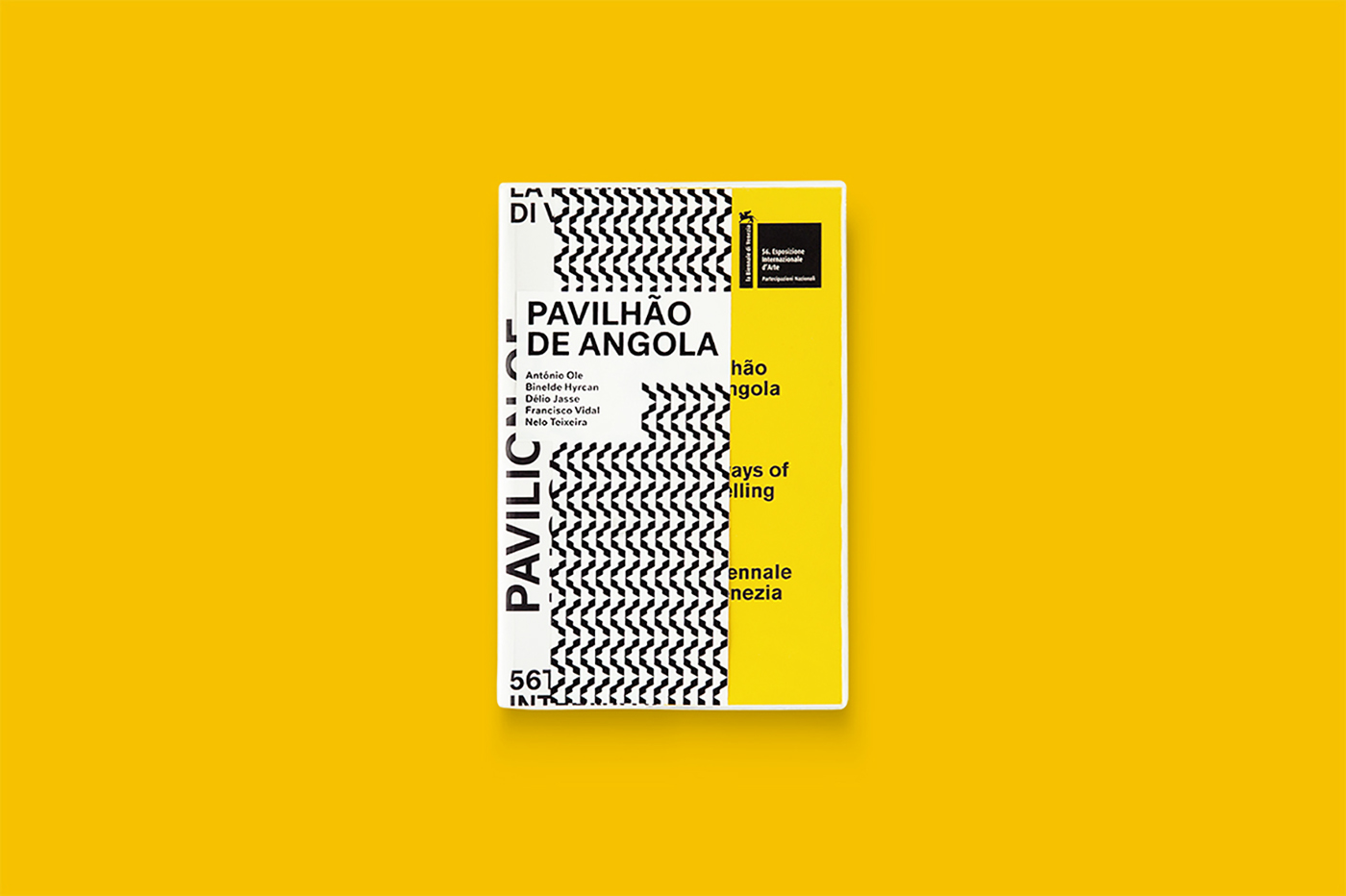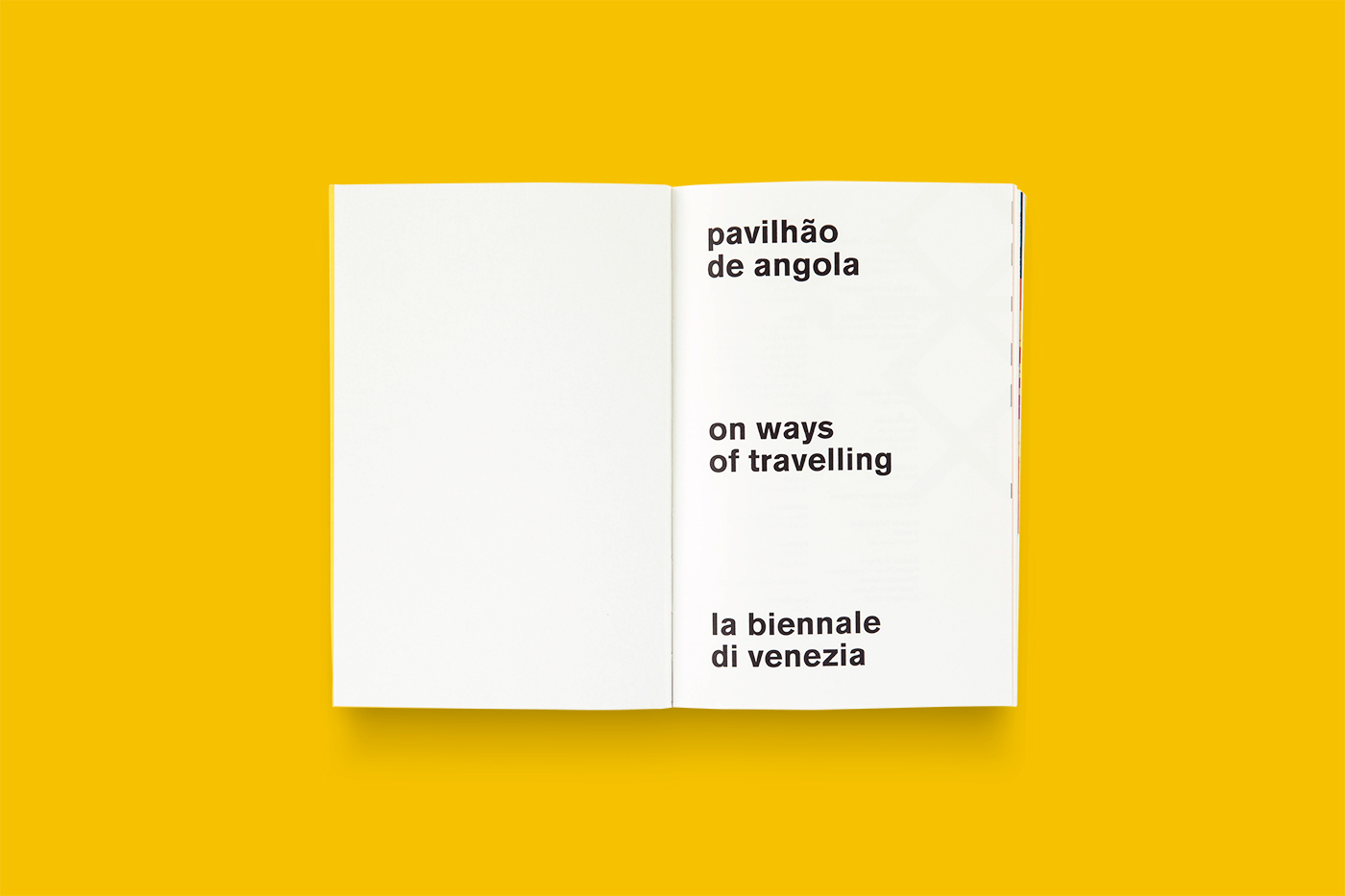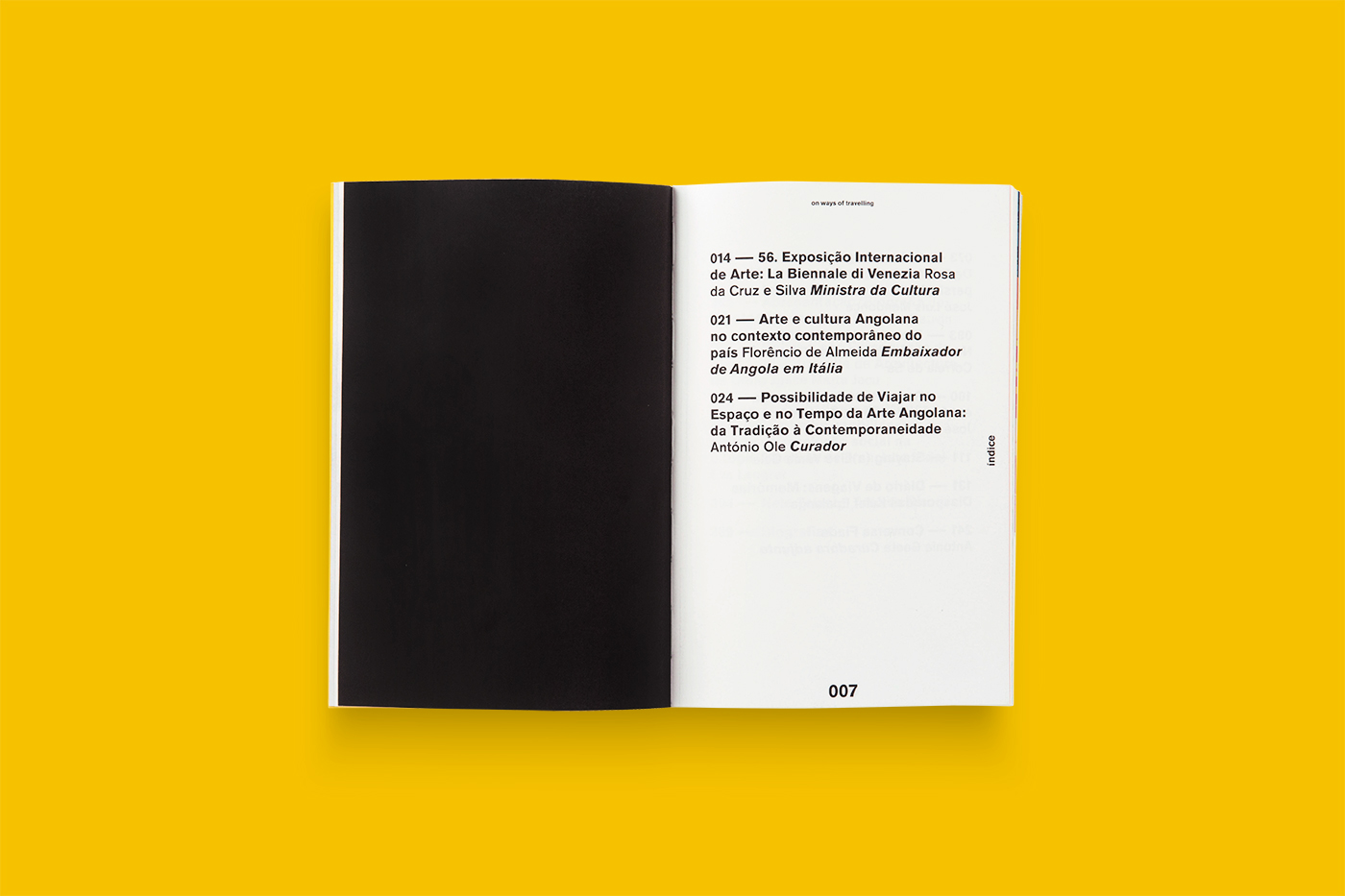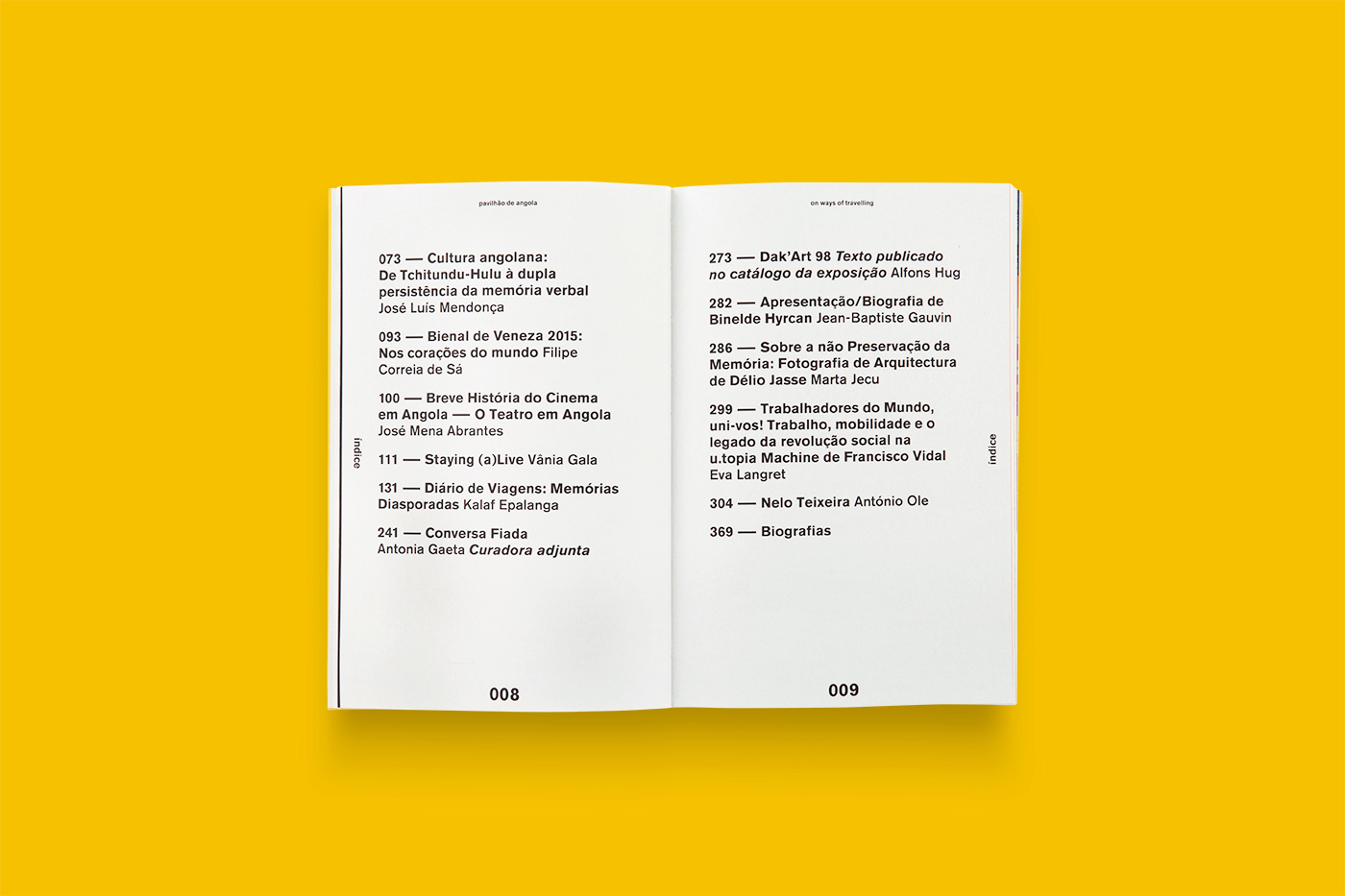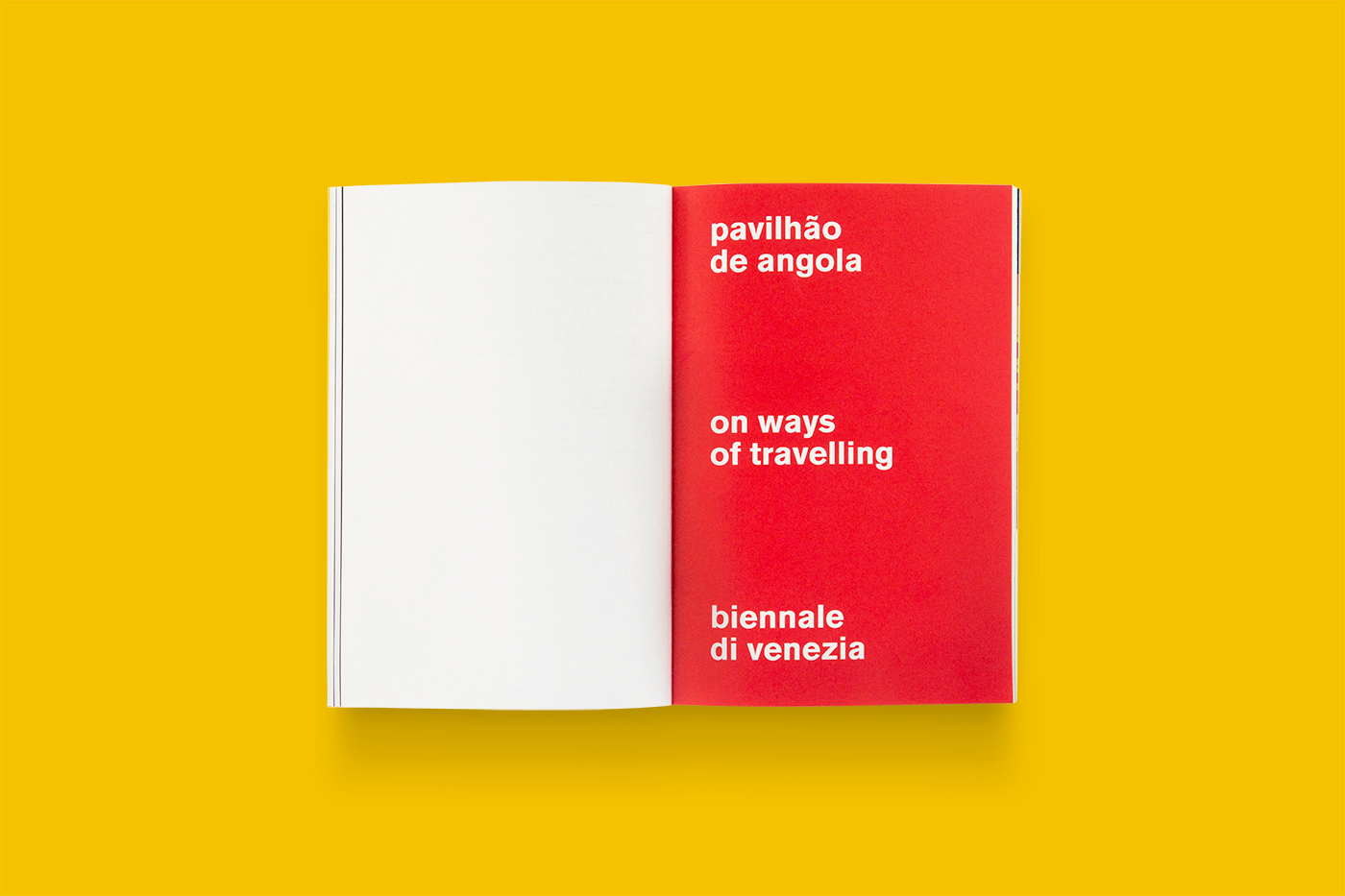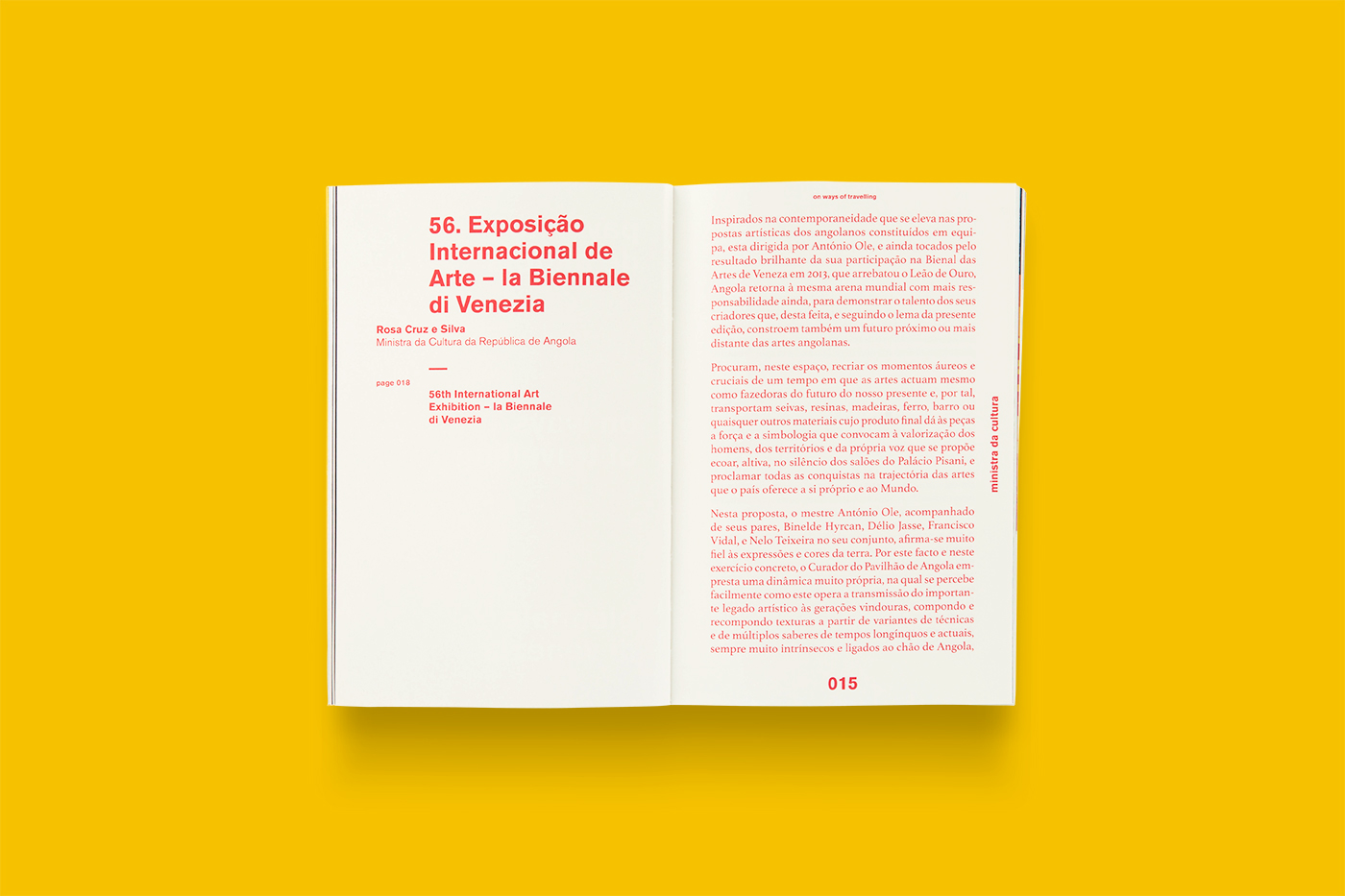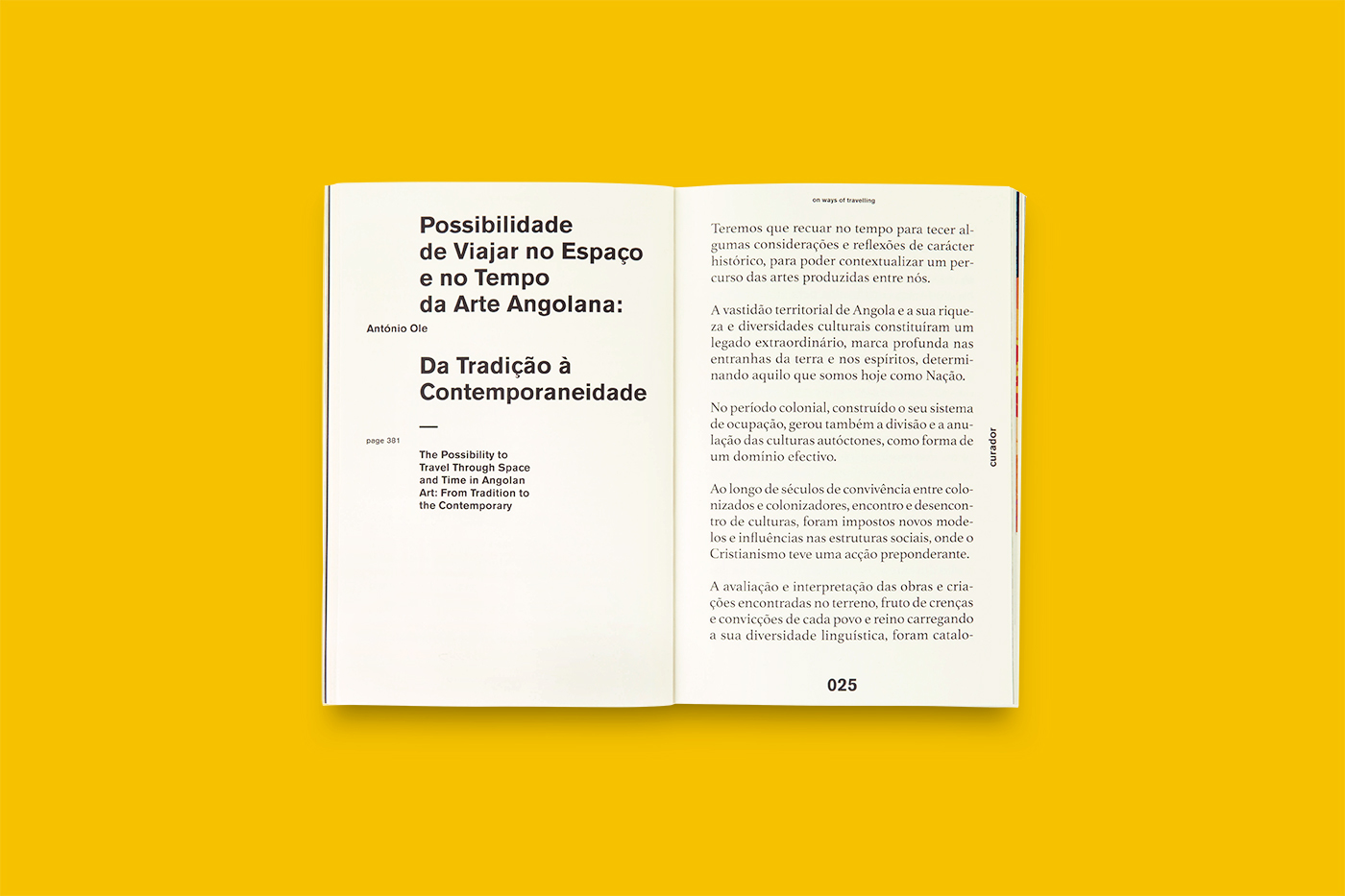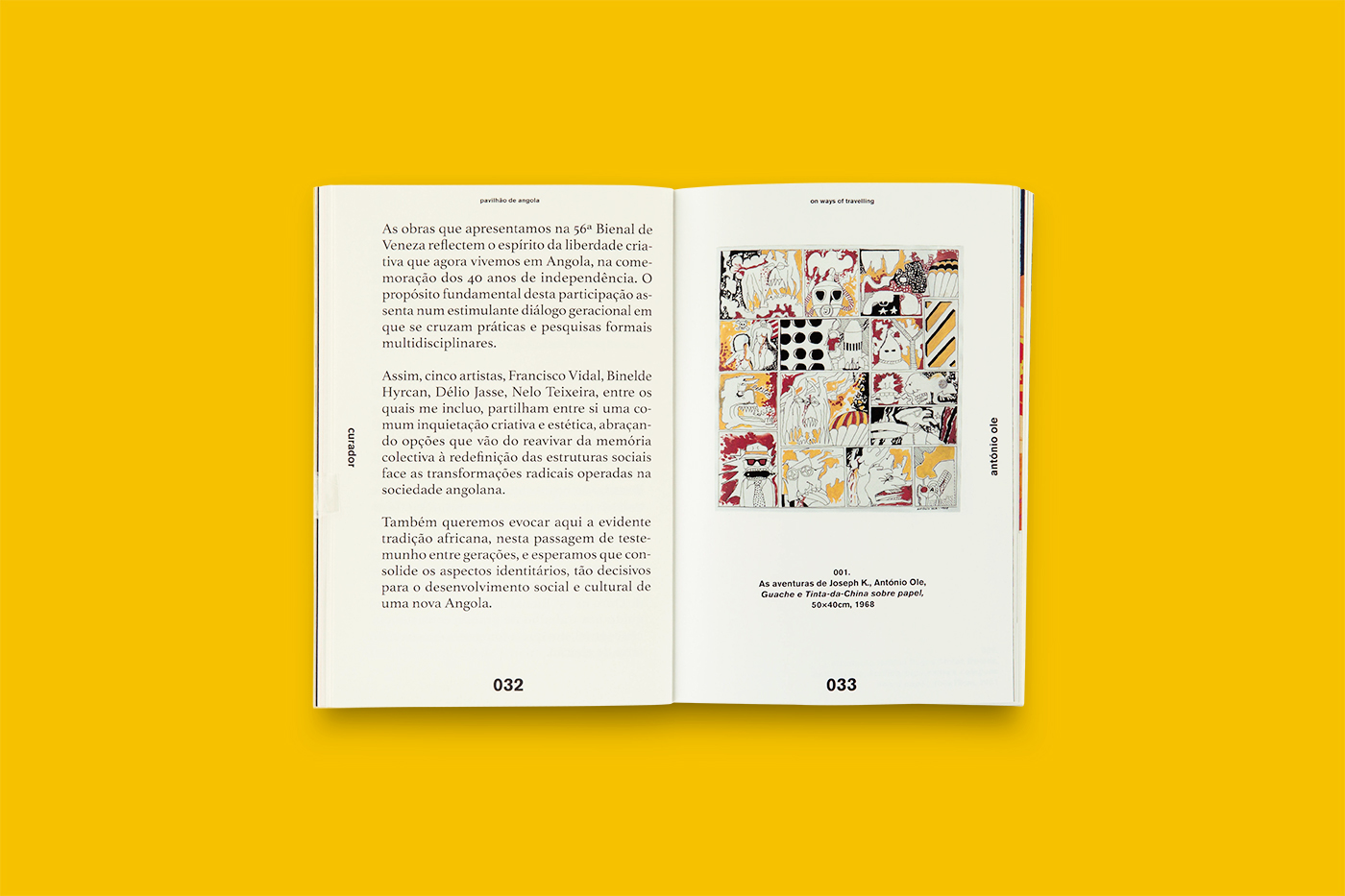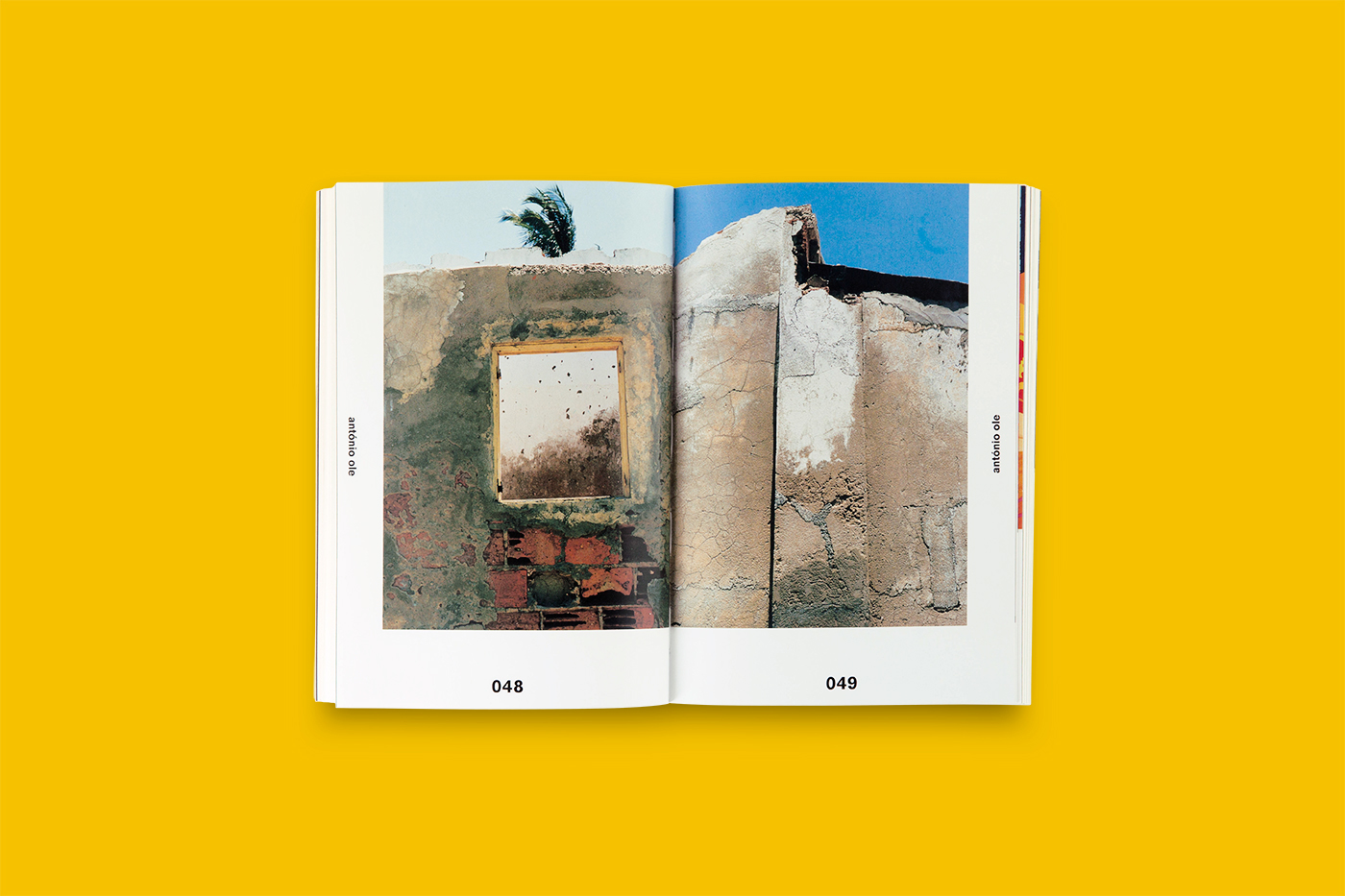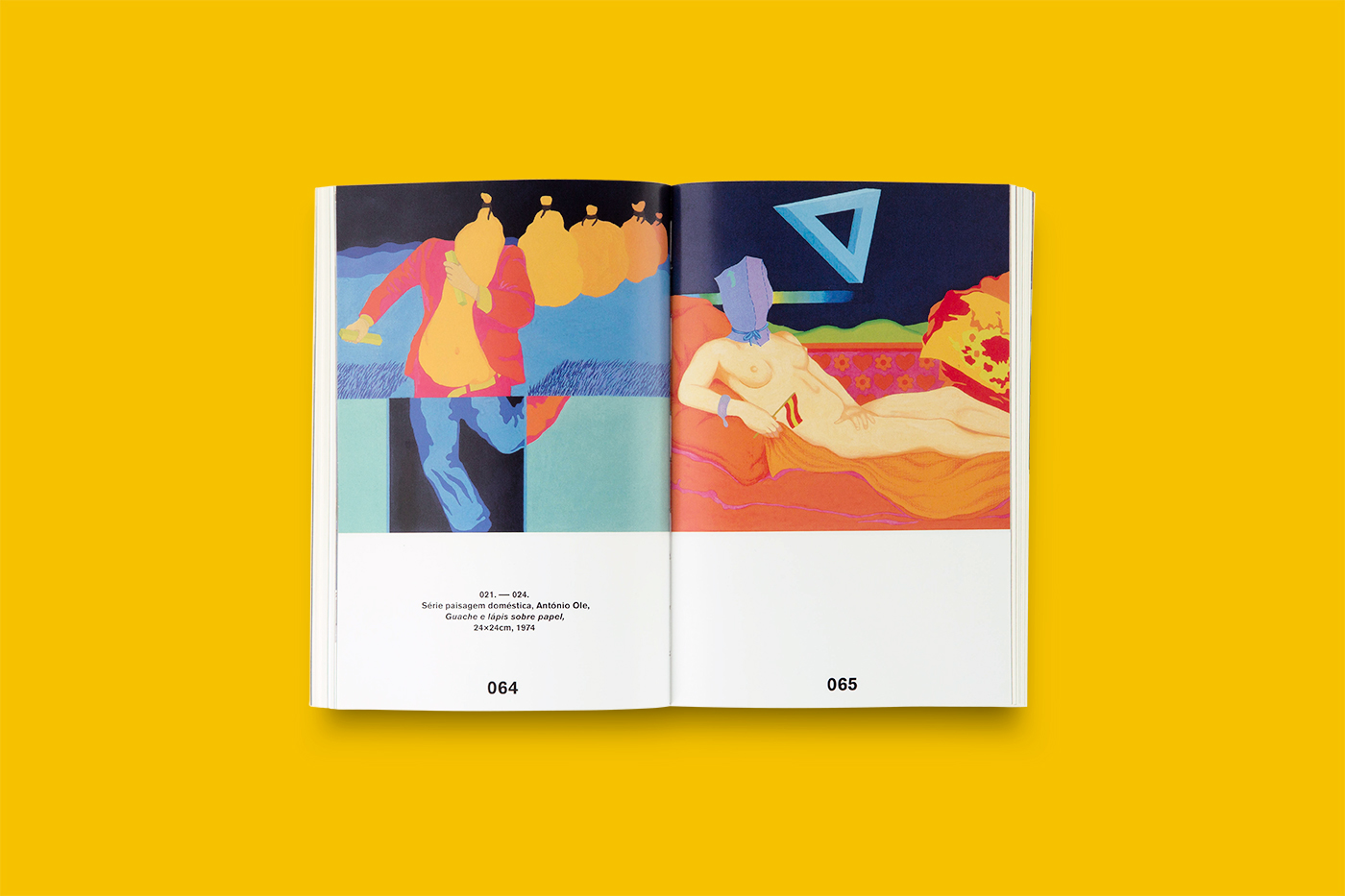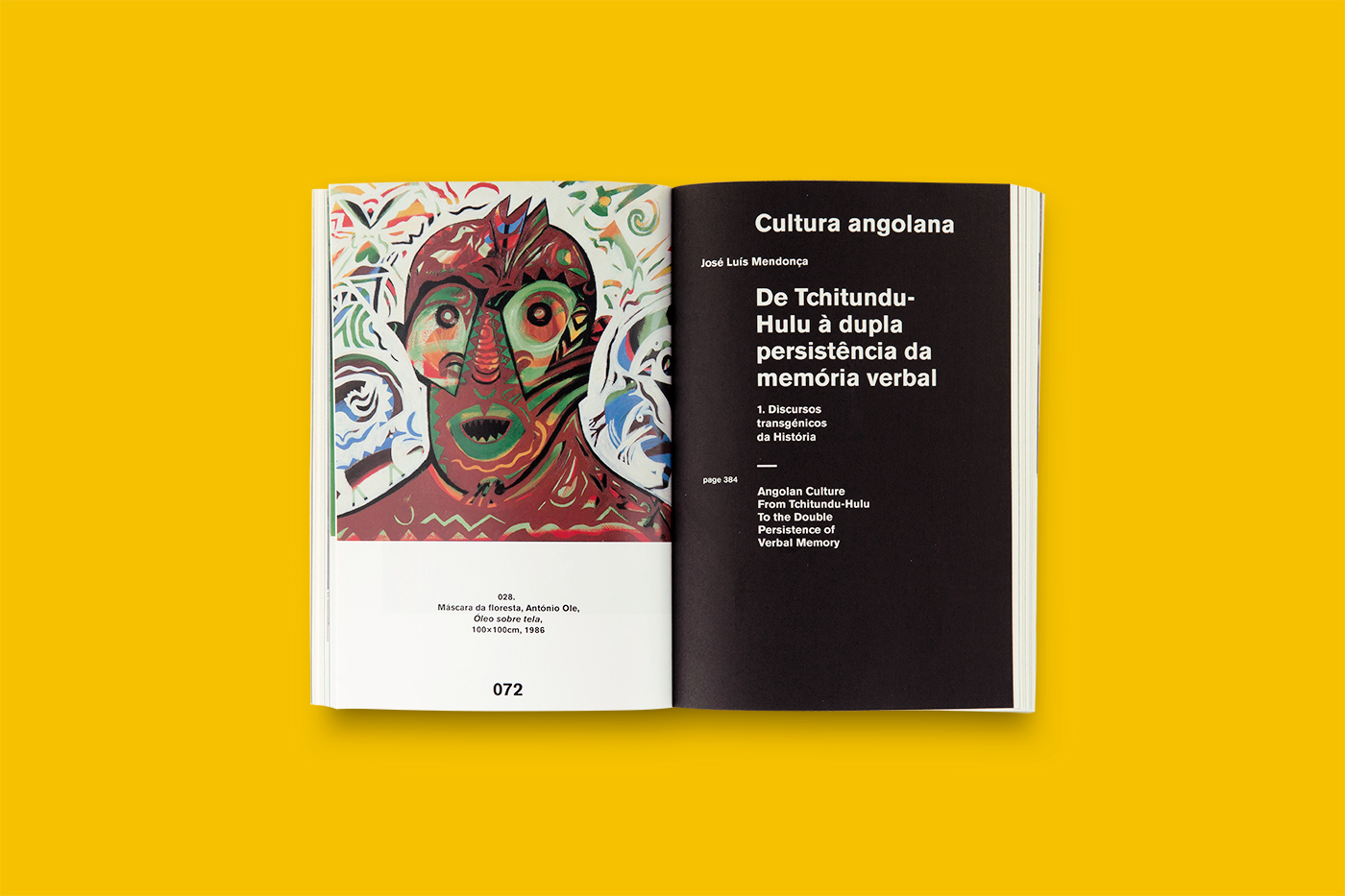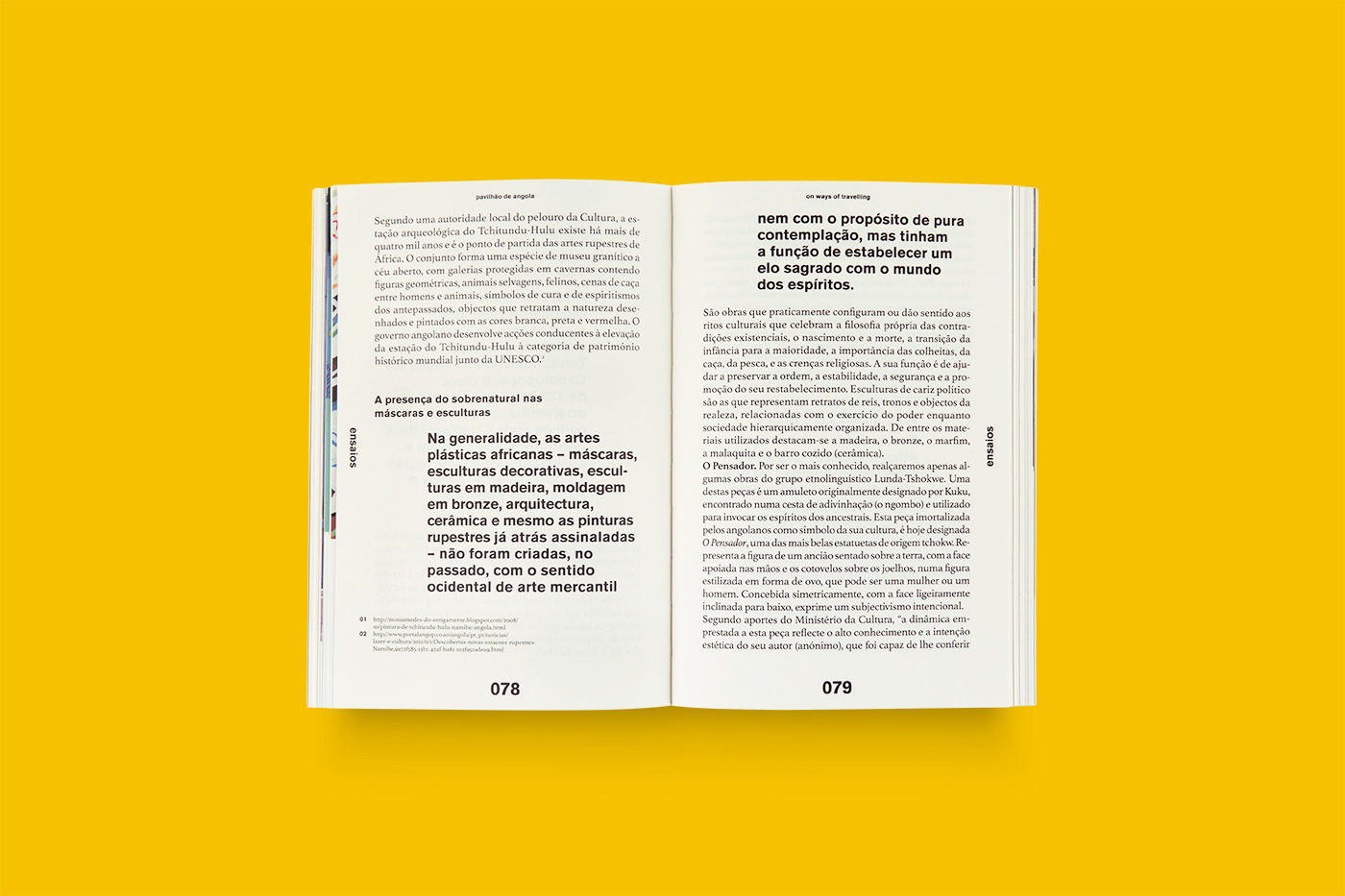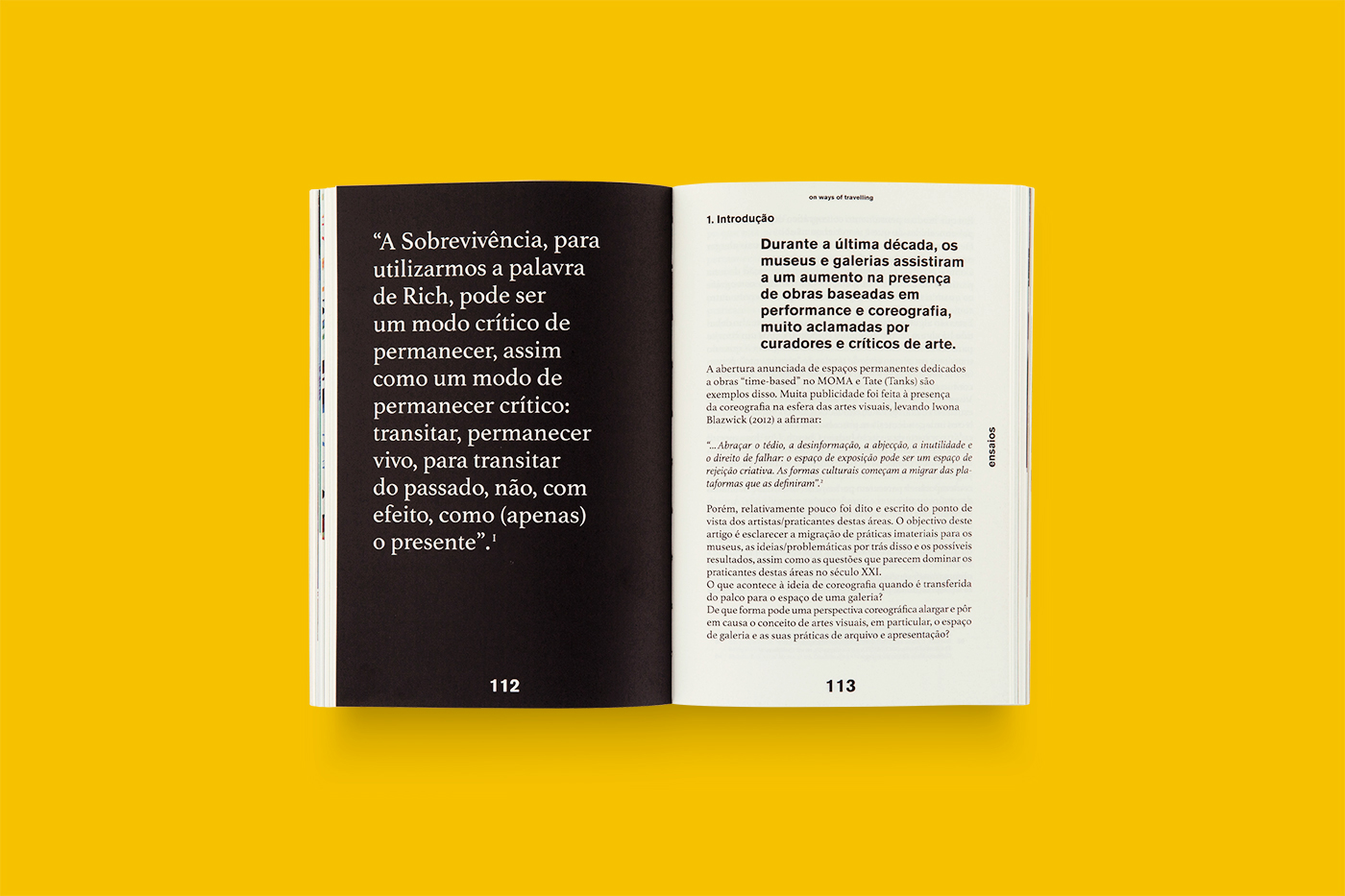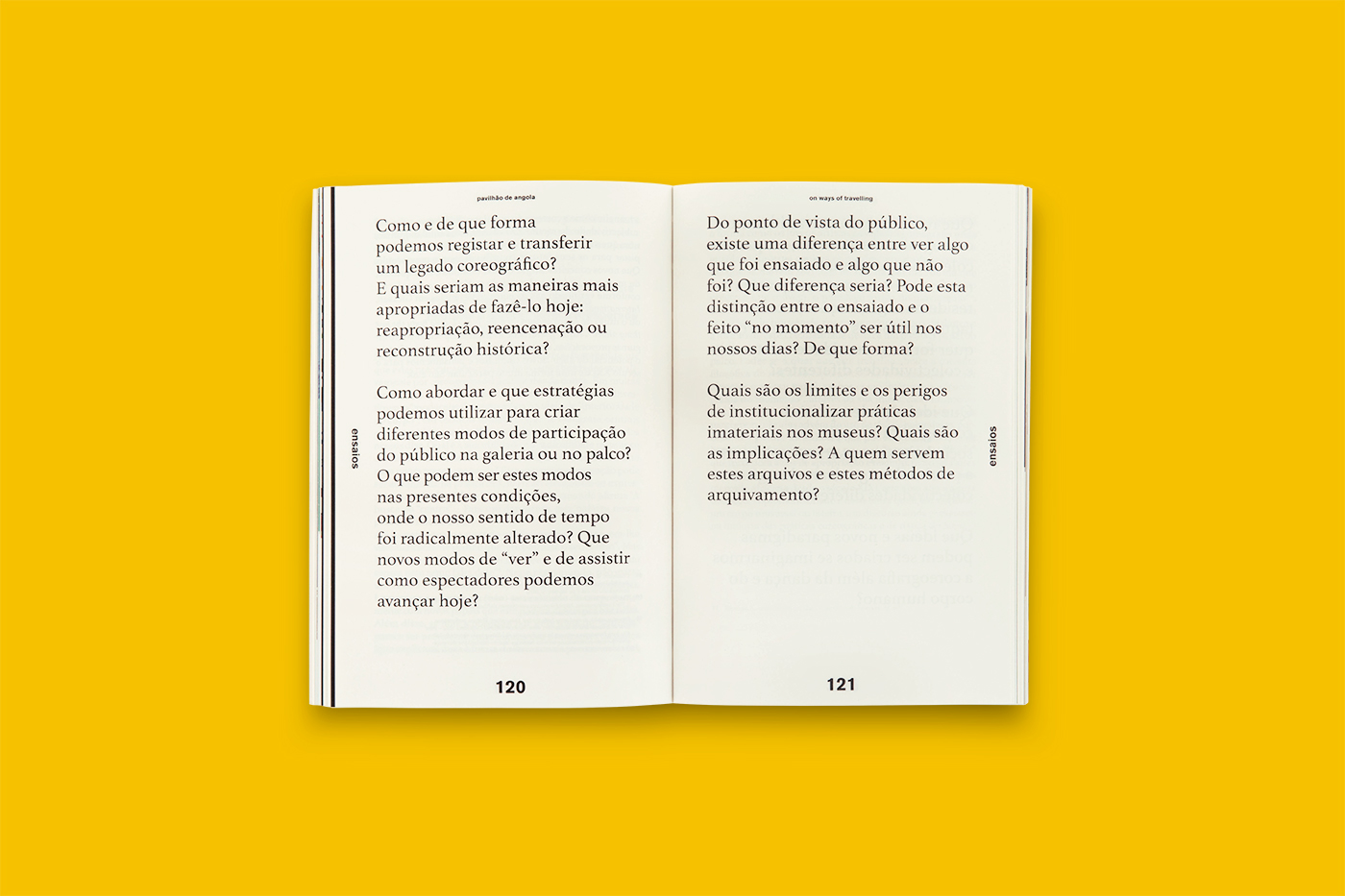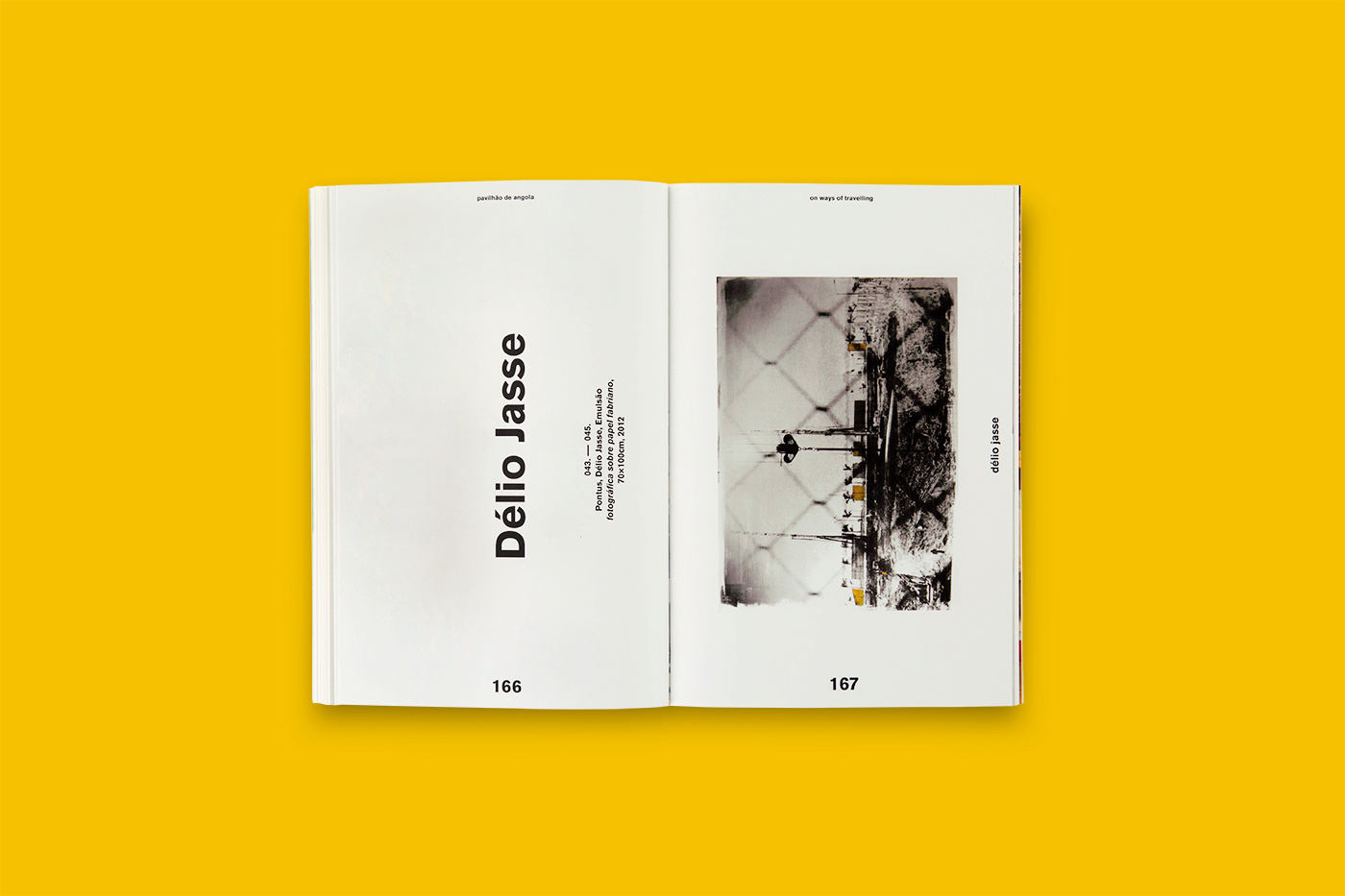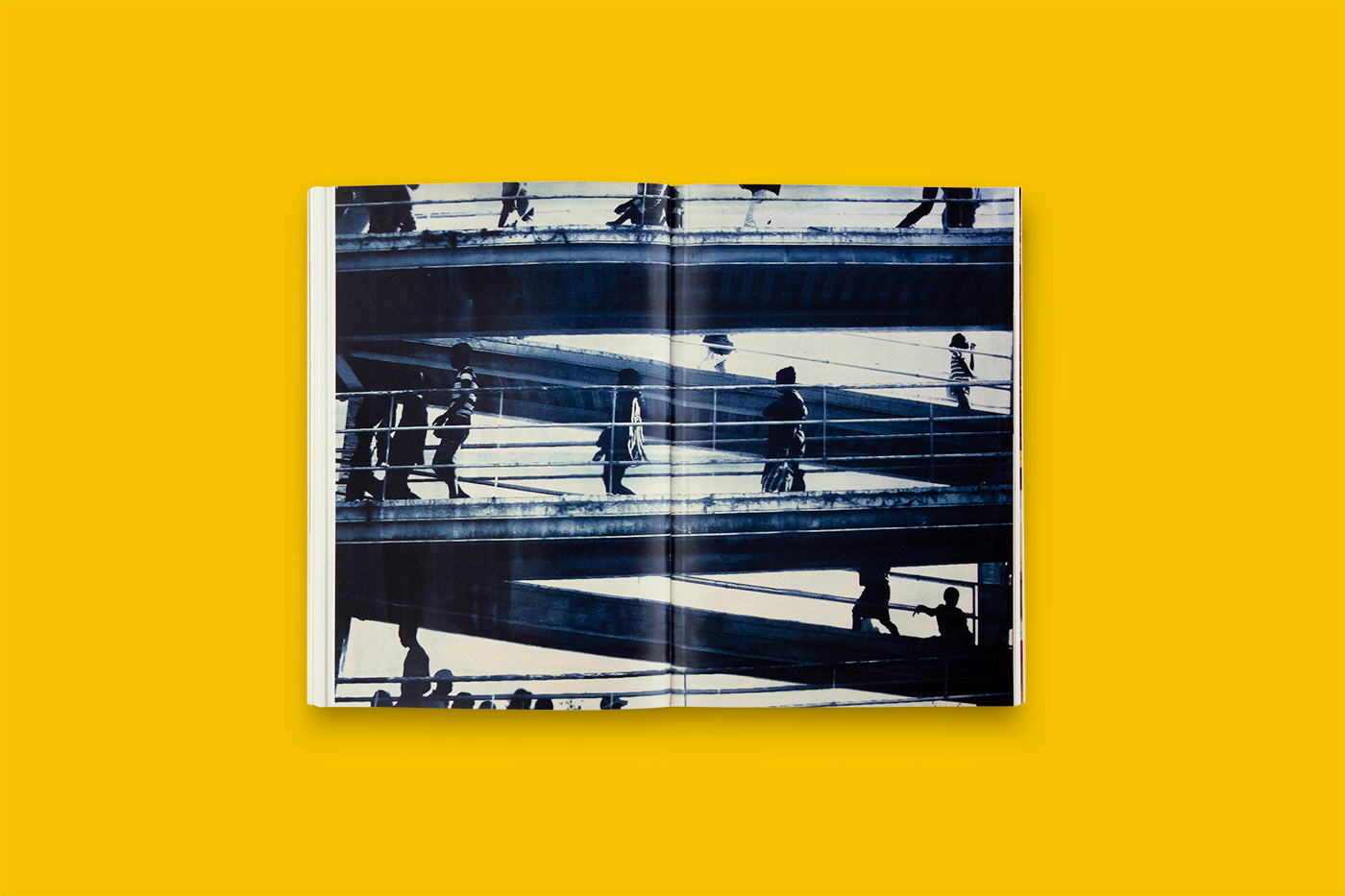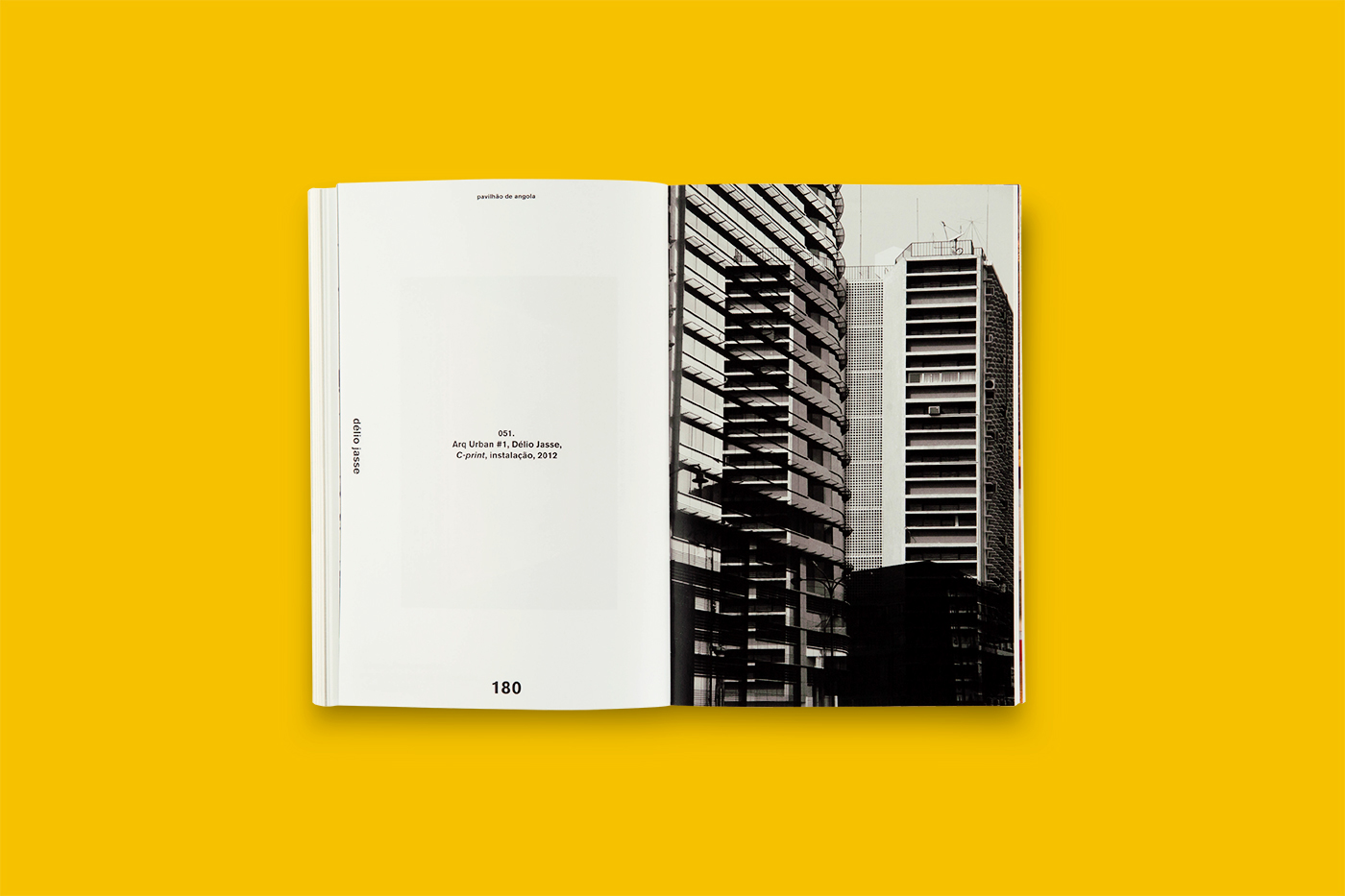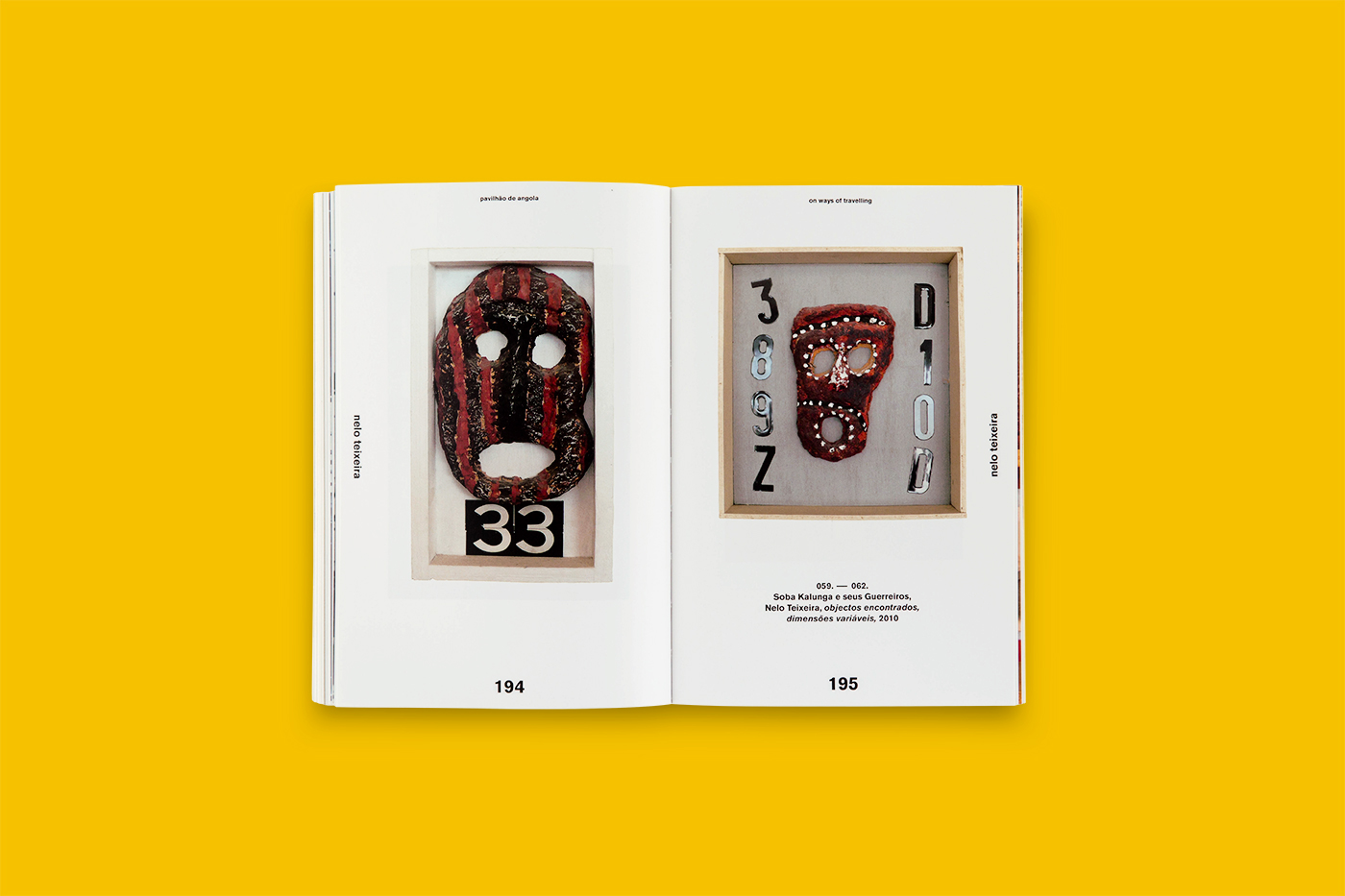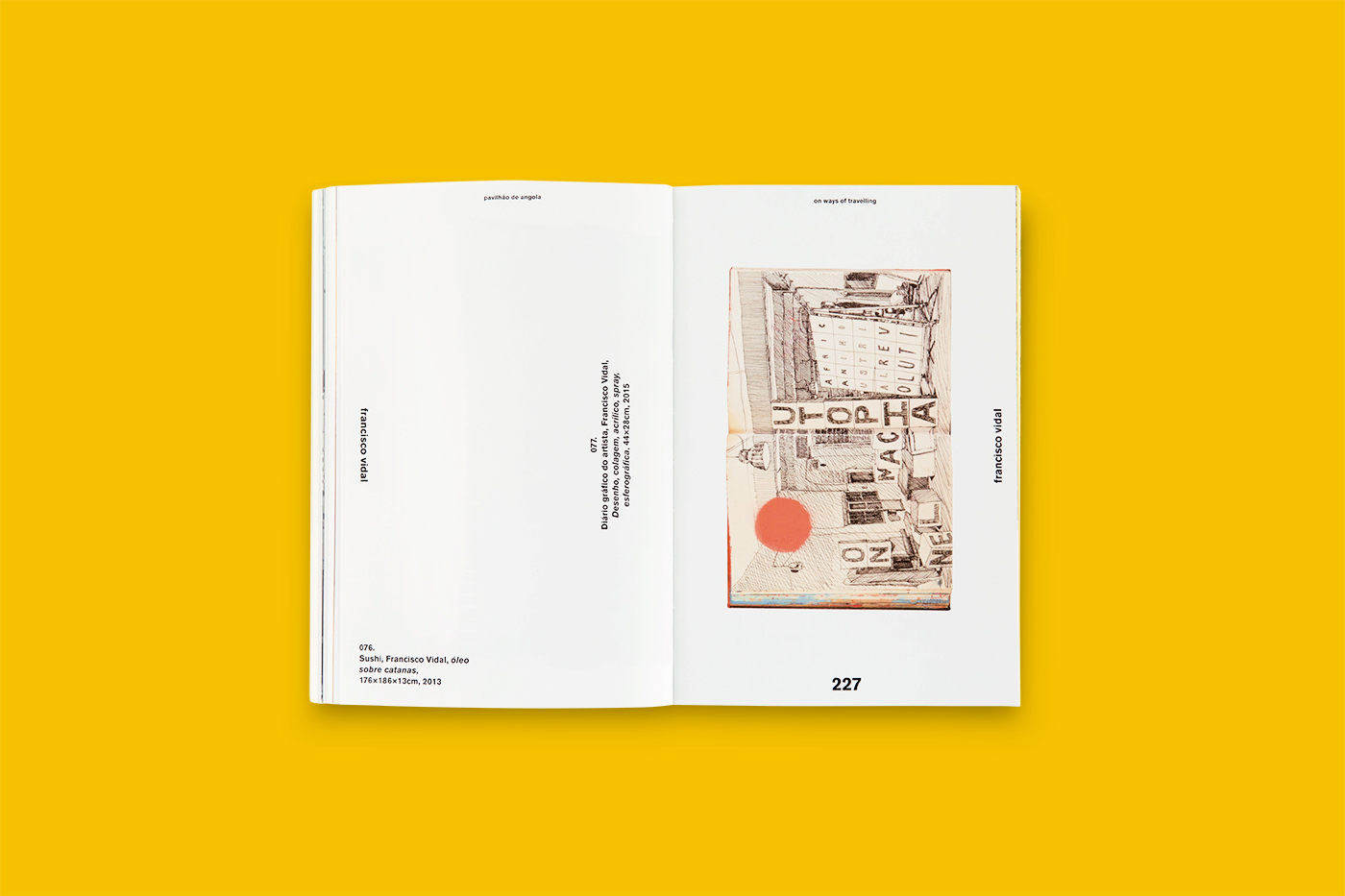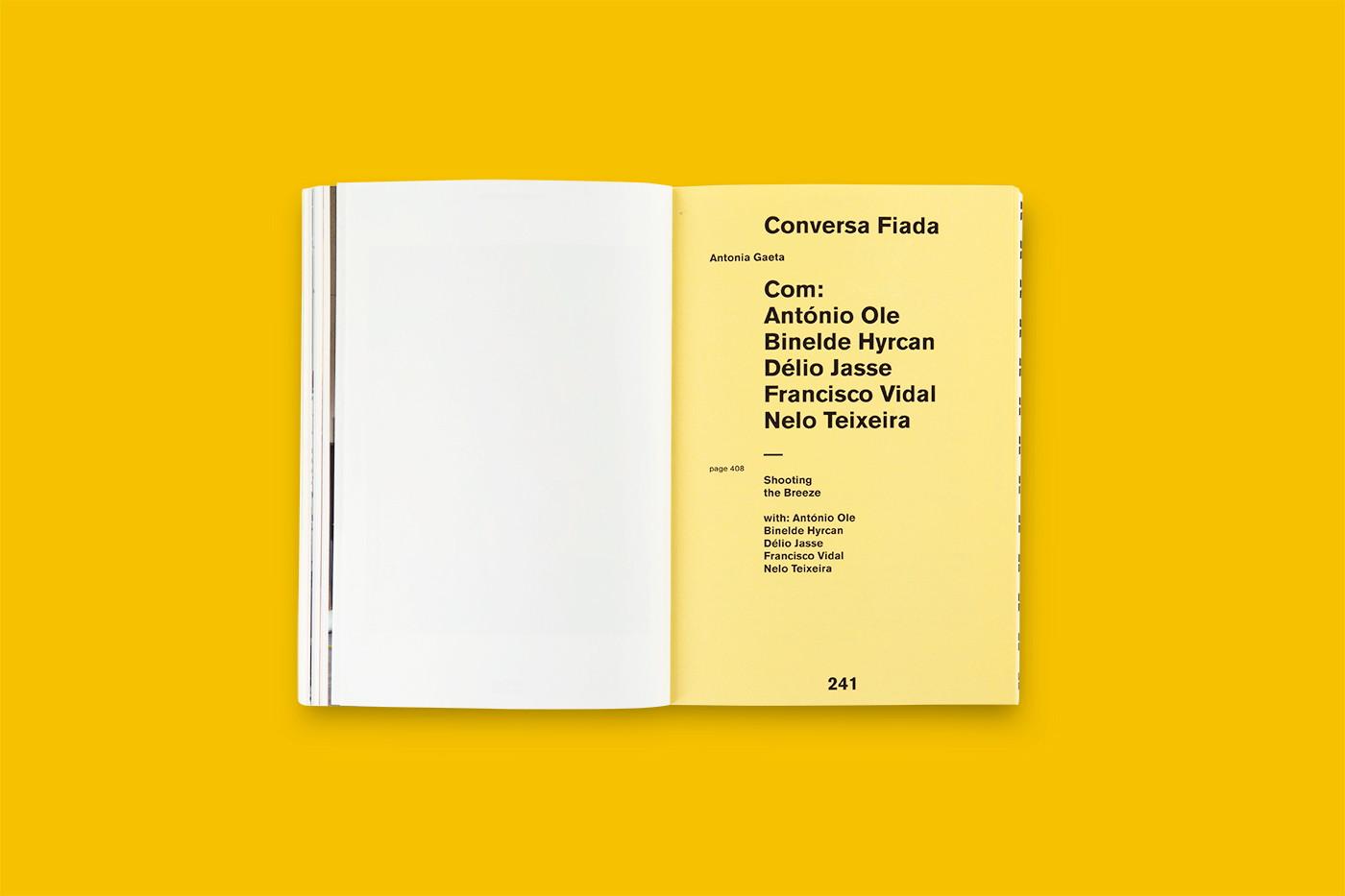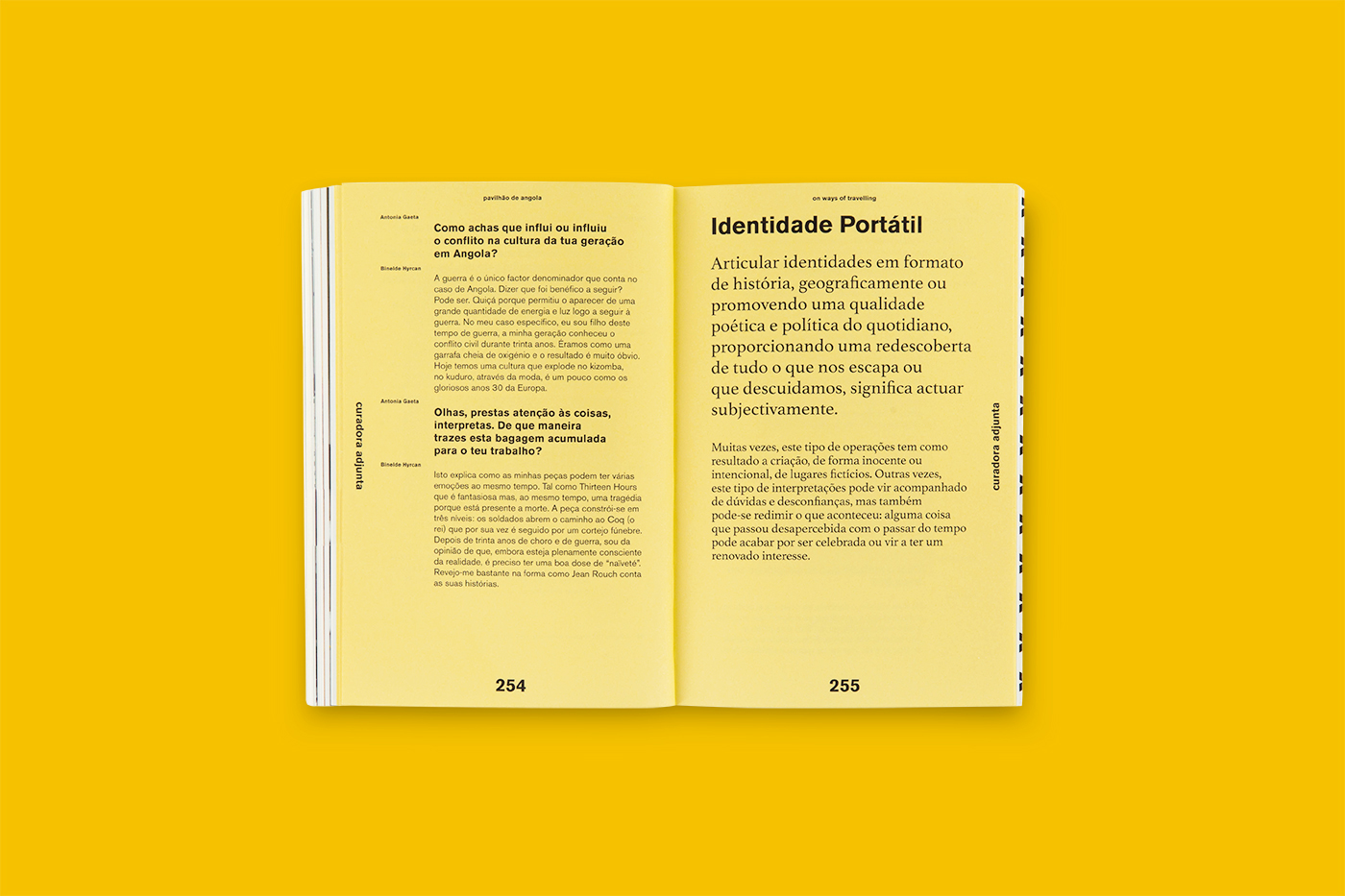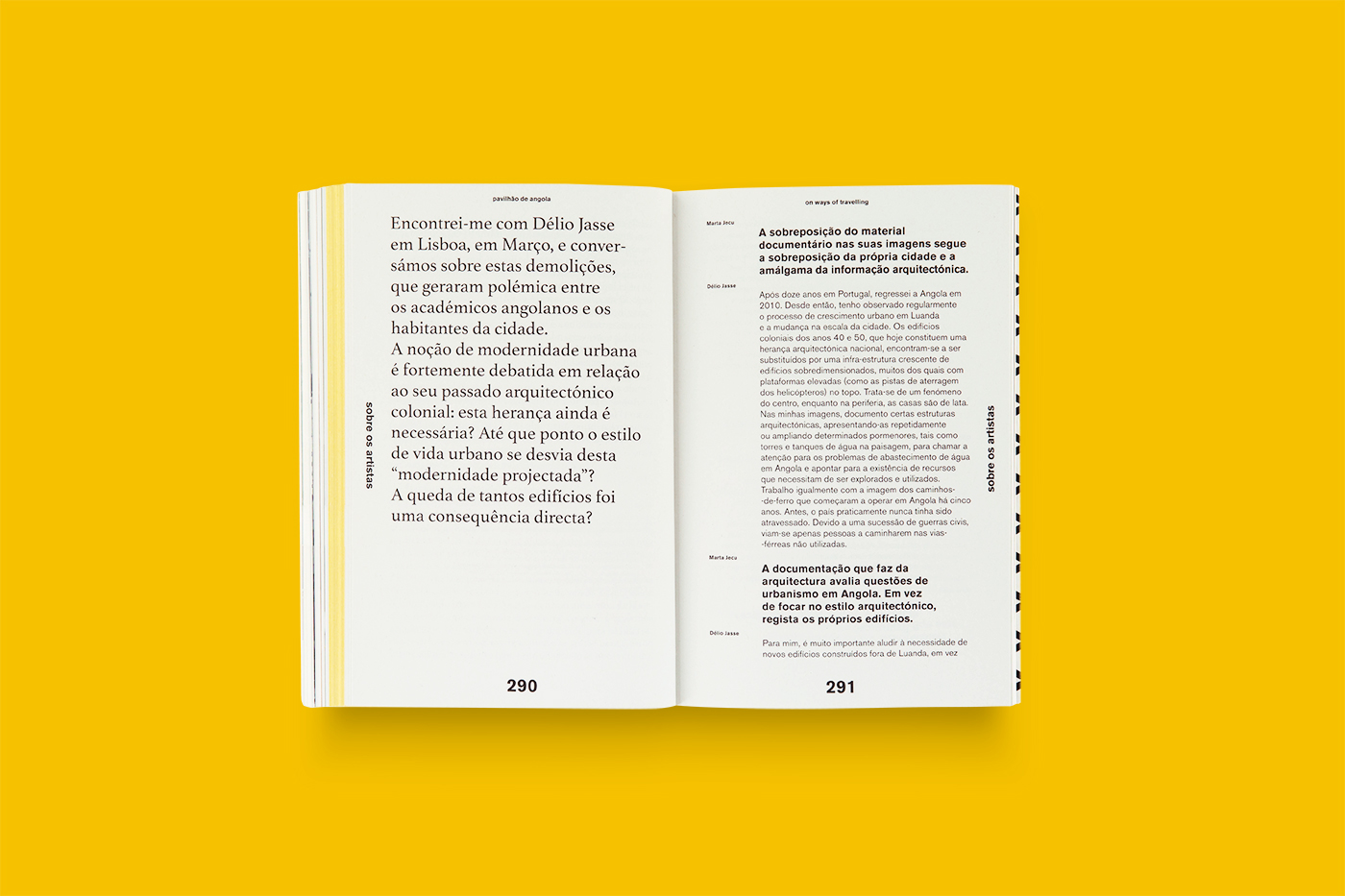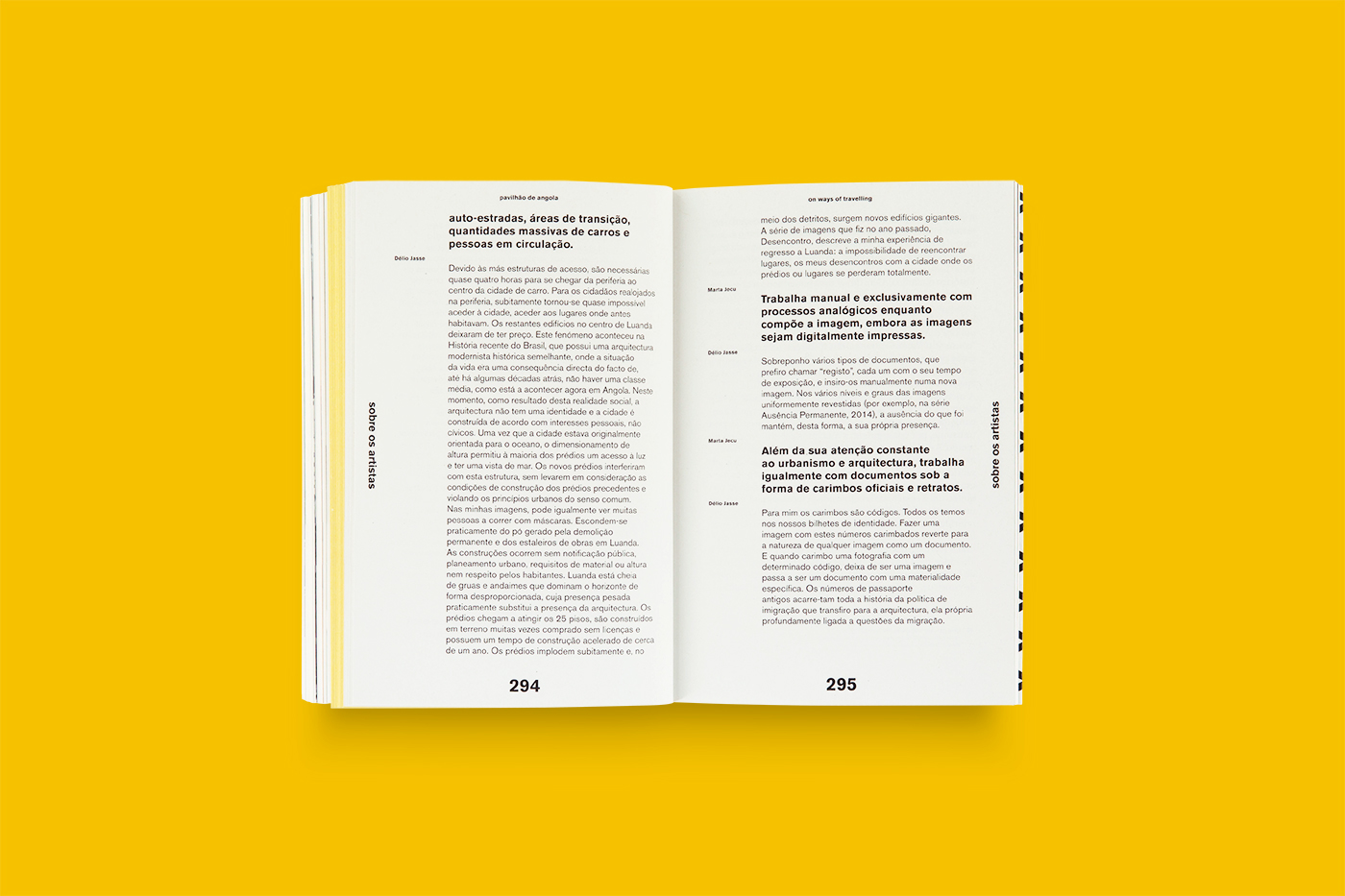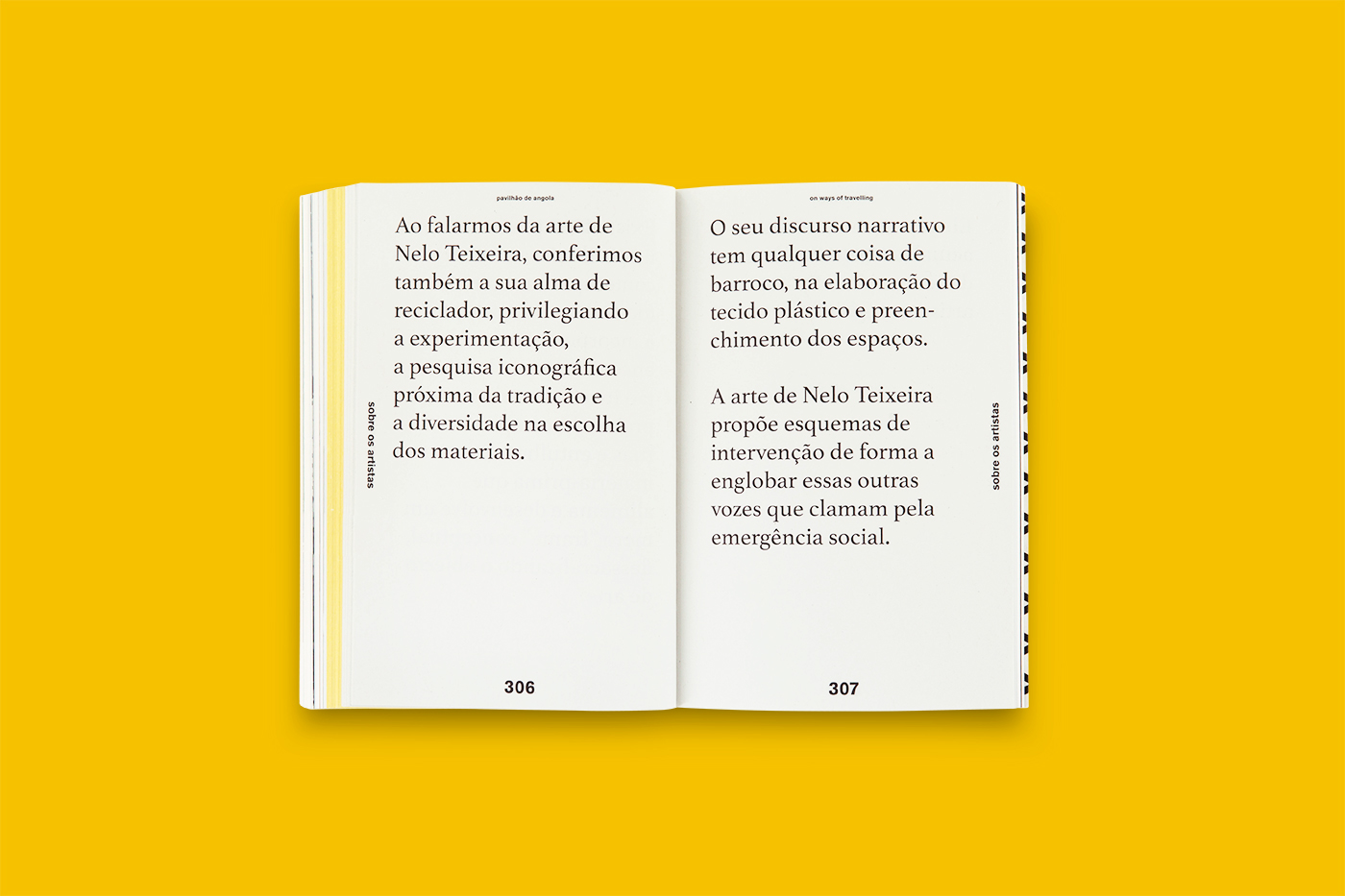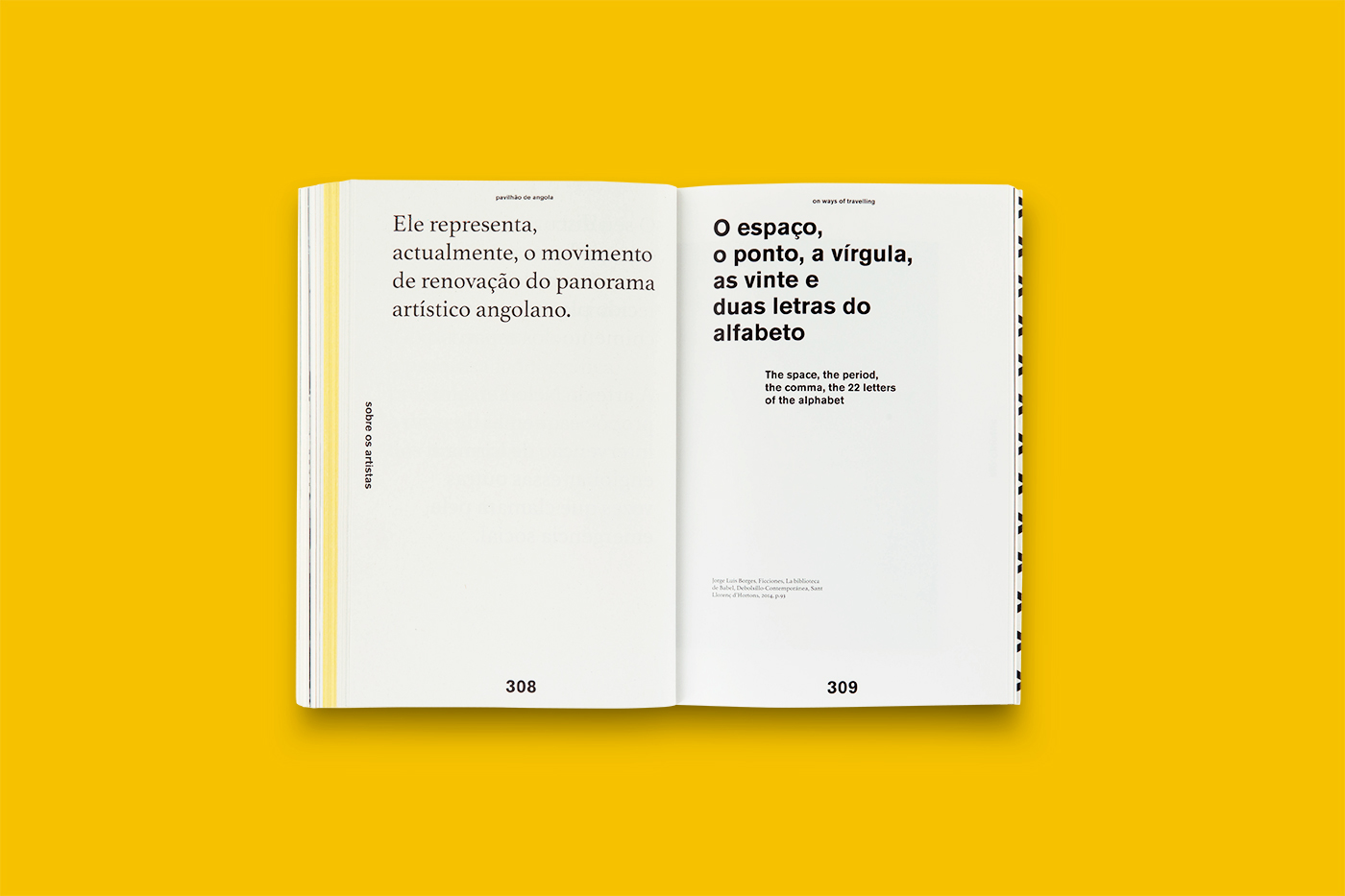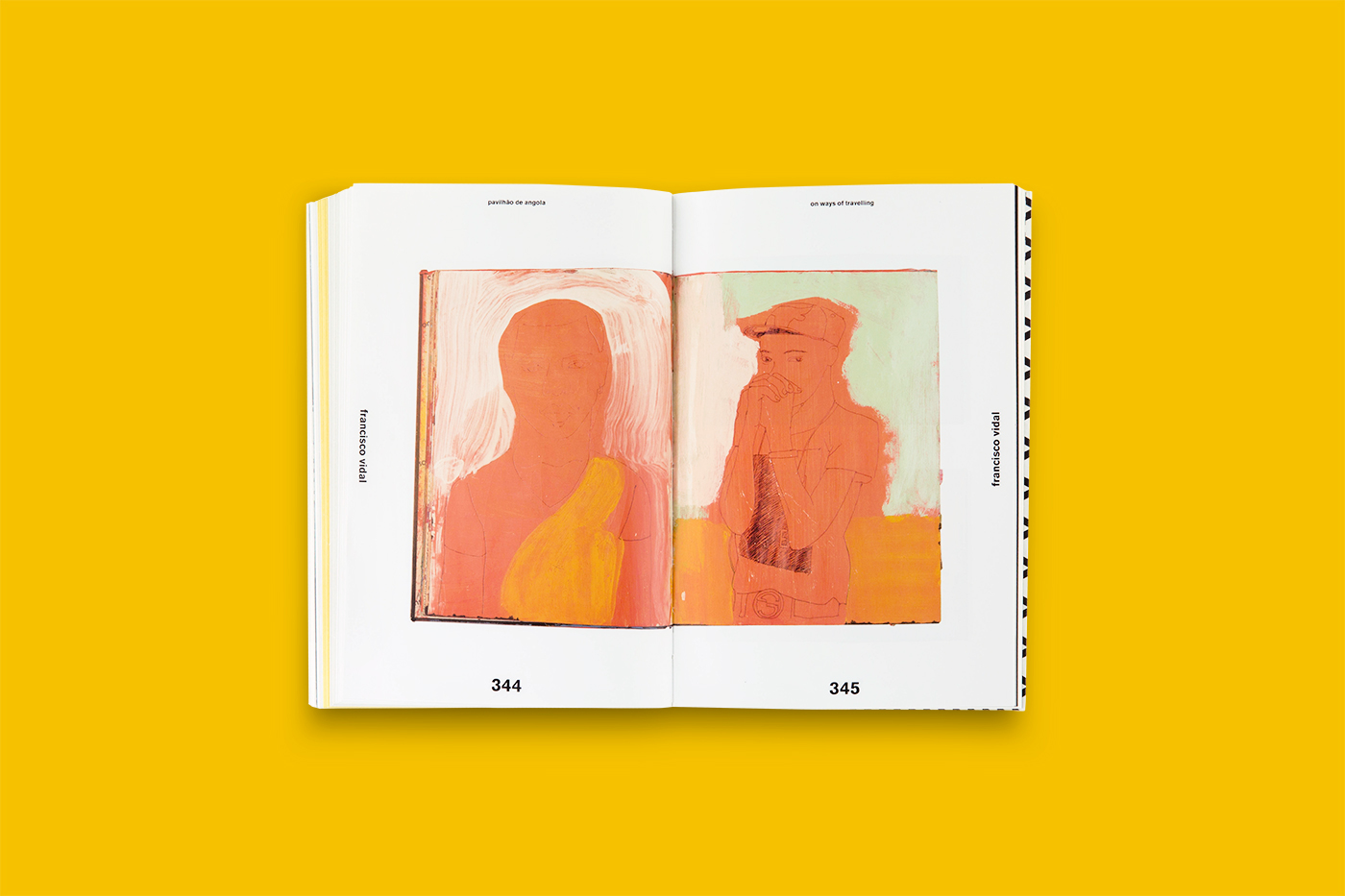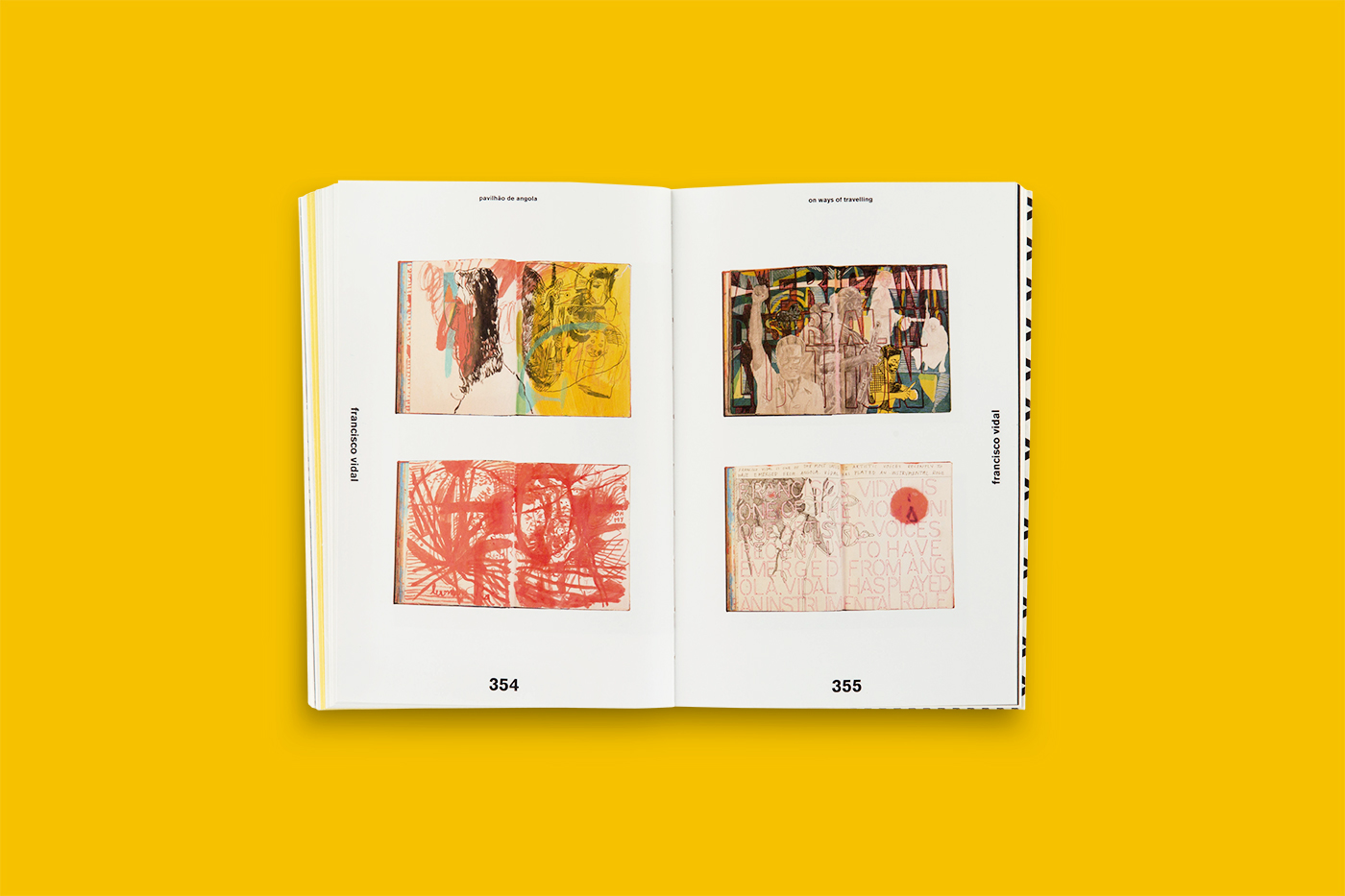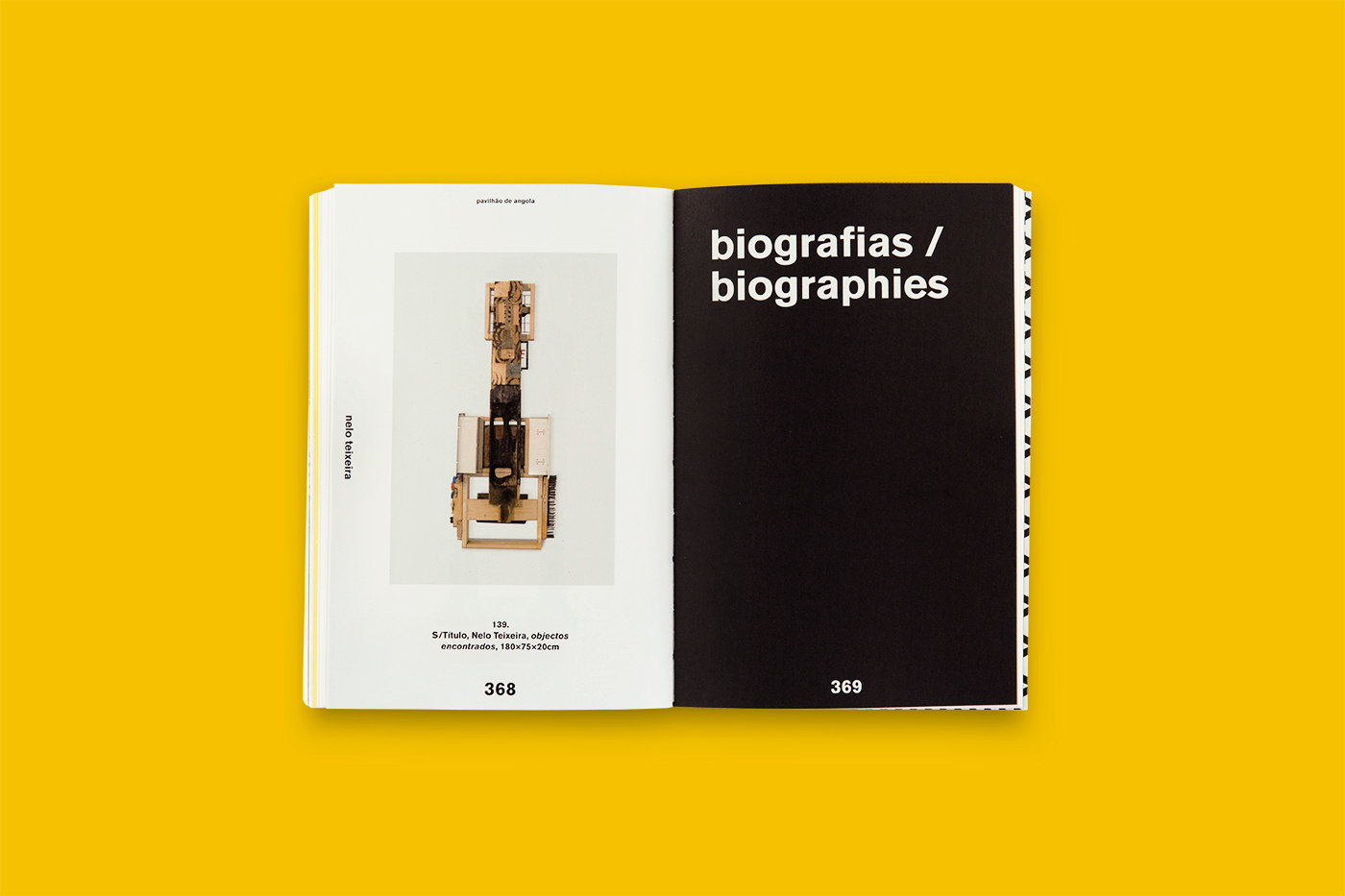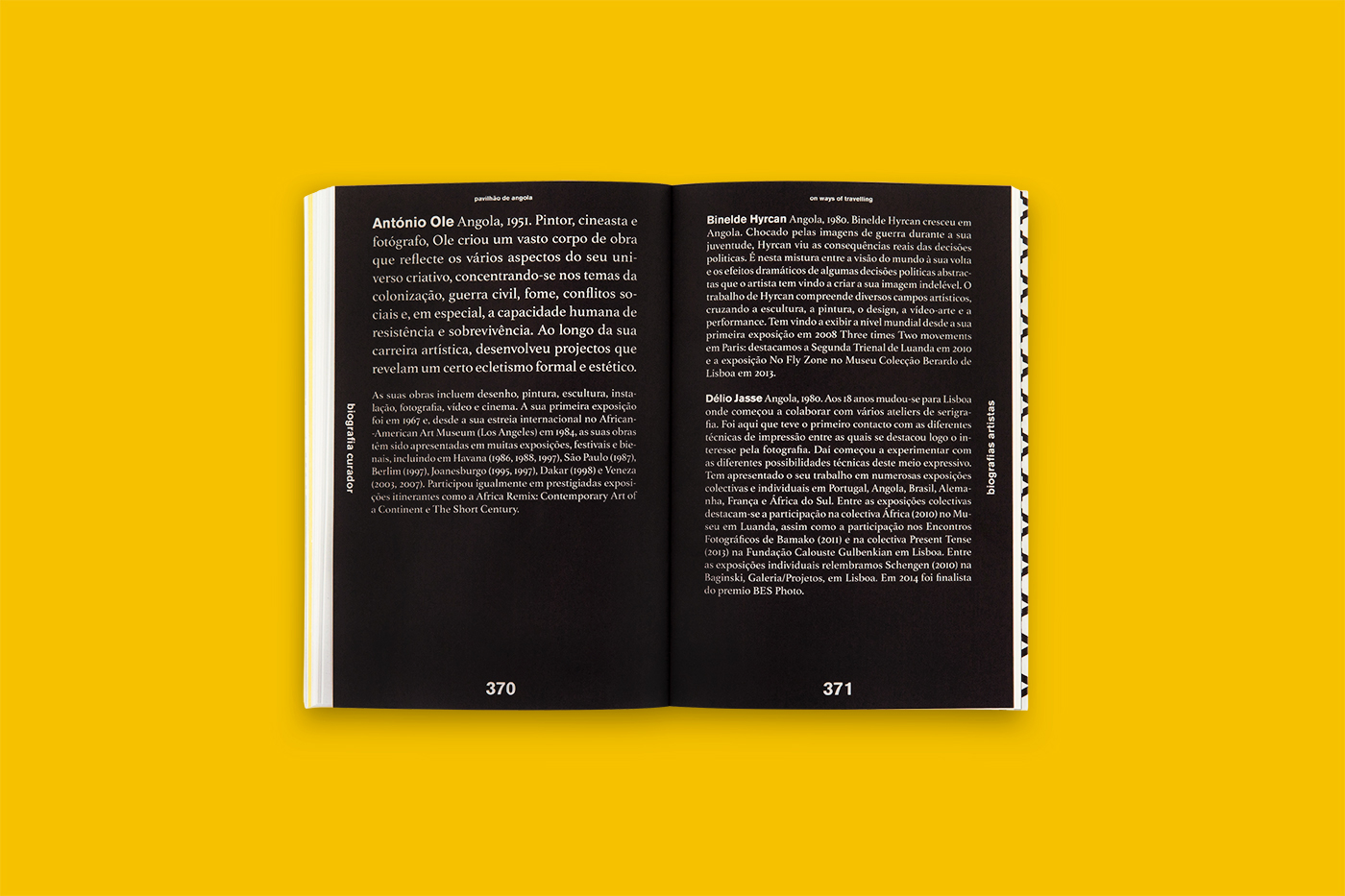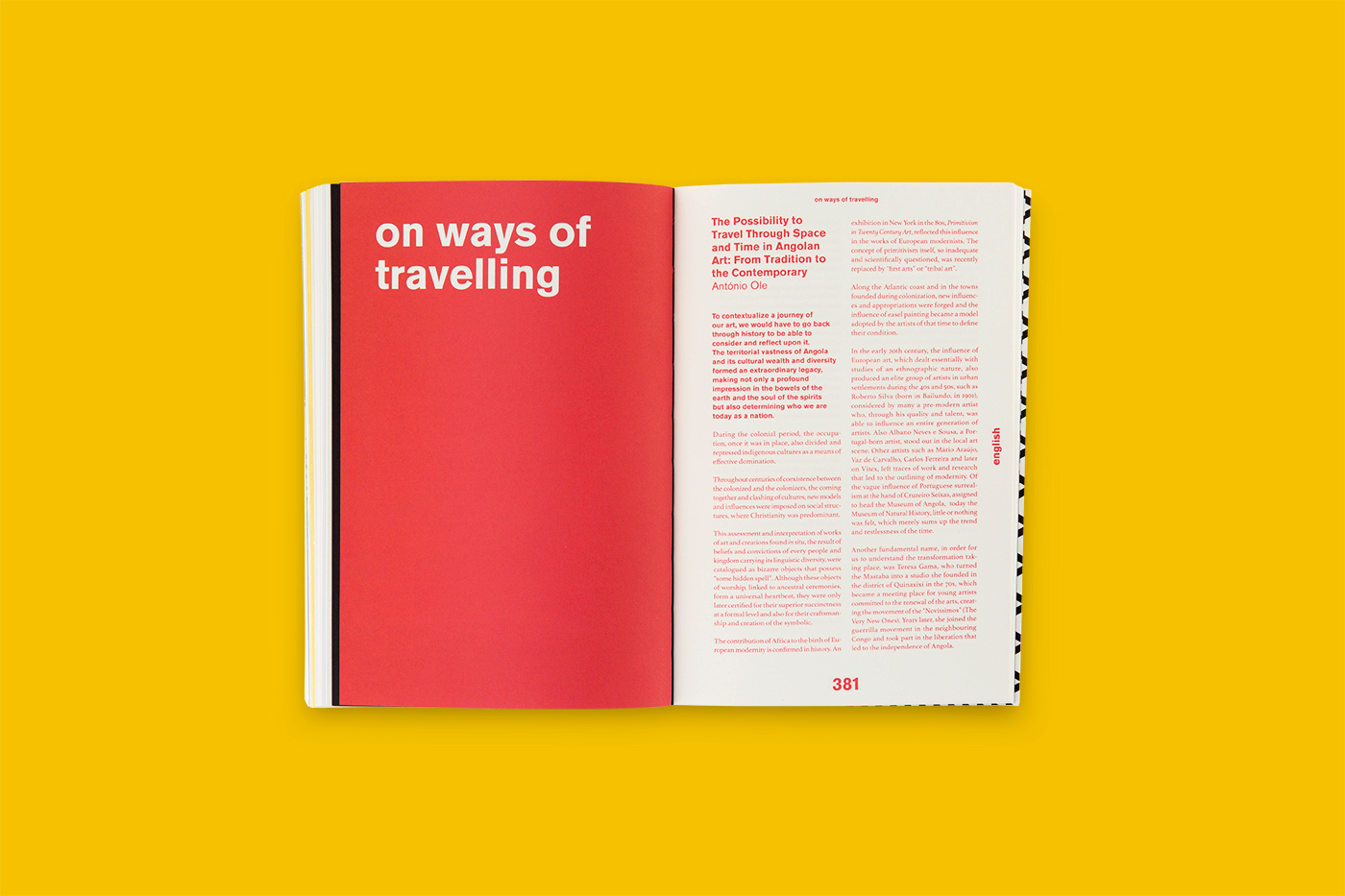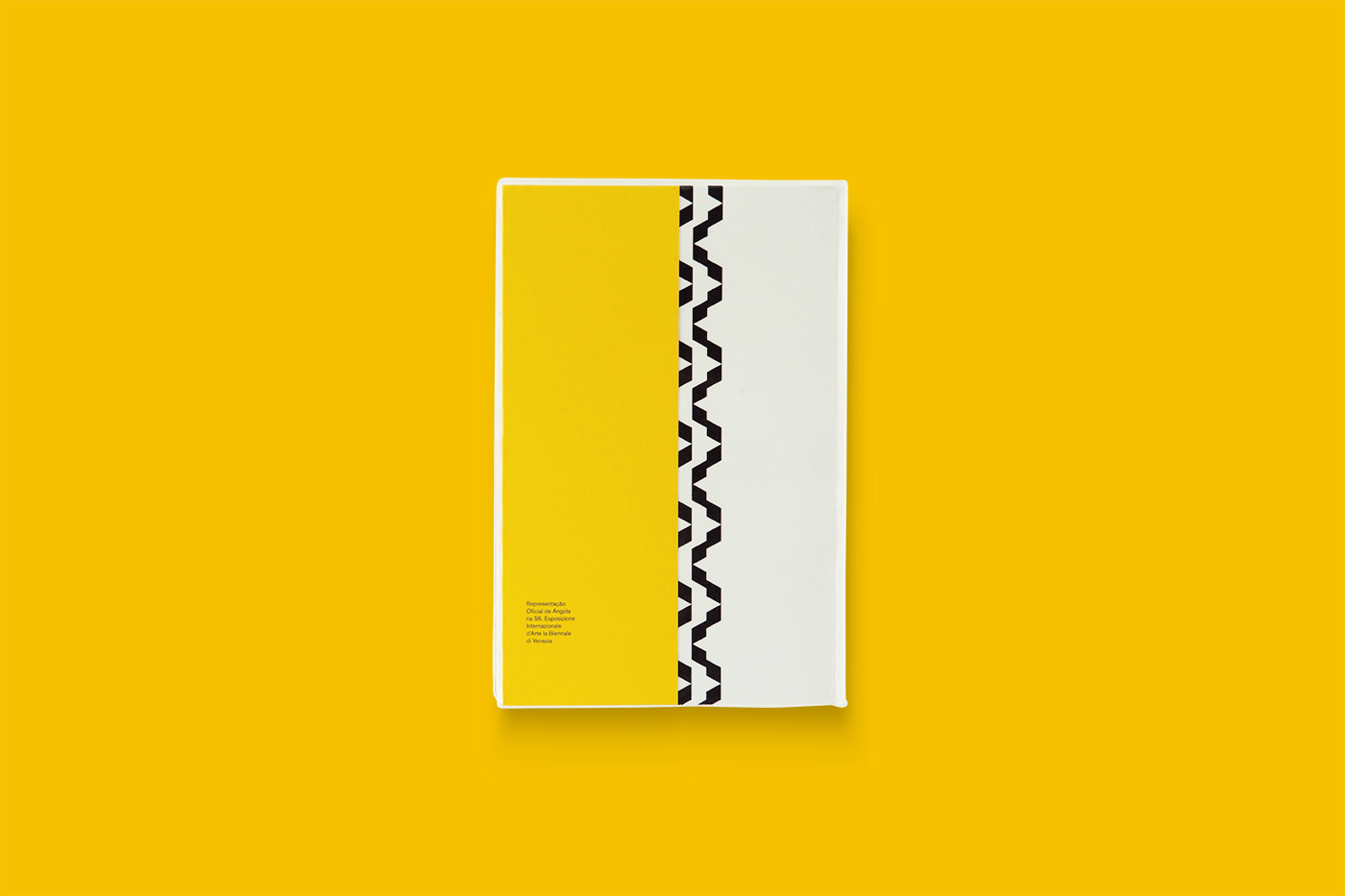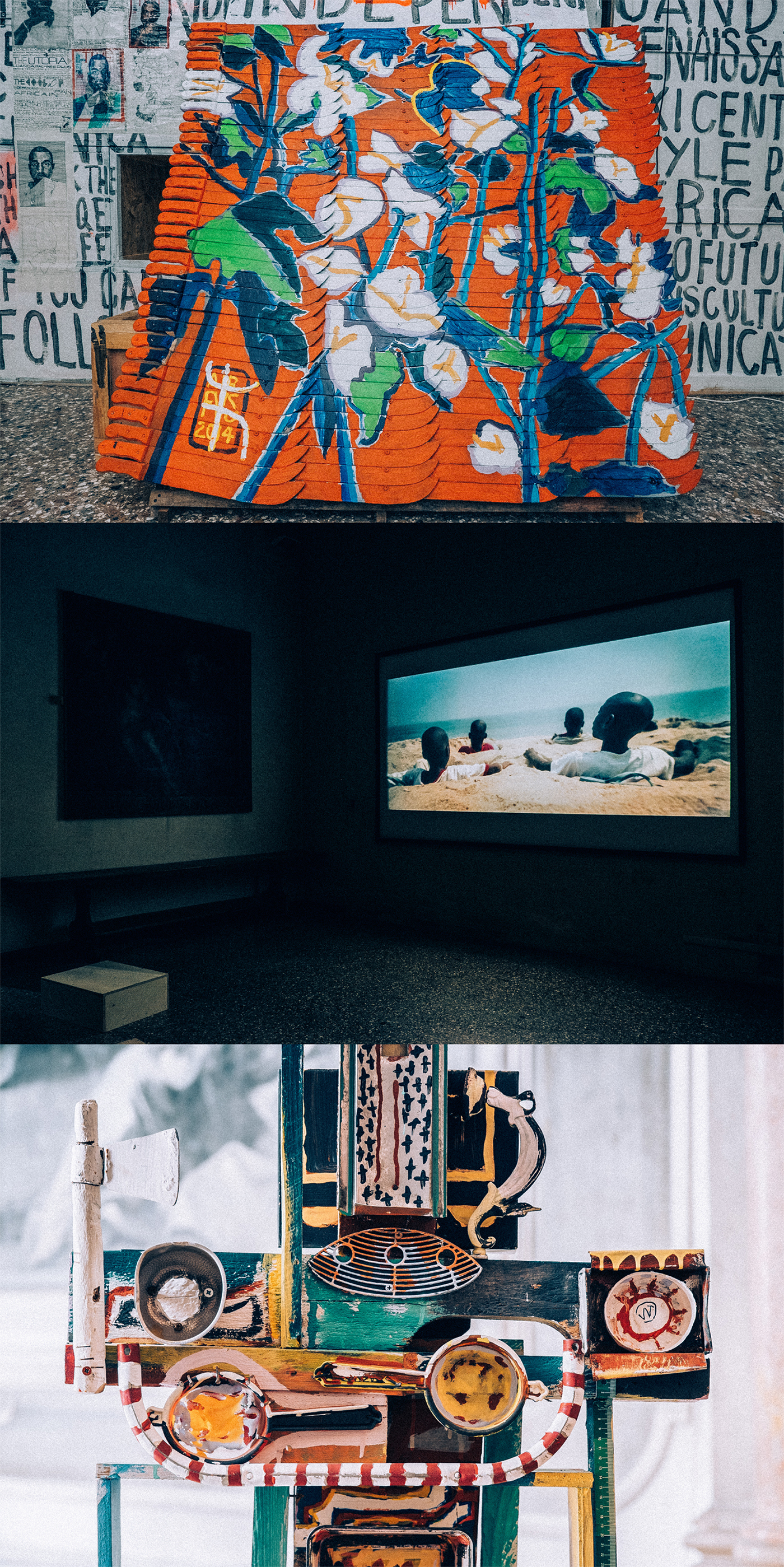On Ways of Travelling –
Pavilion of Angola at the 56th Biennale di Venezia
Catalogue/Book
The Angolan representation at the 56th Venice Biennale was fundamental for the reputation of the country’s art scene. After winning the Golden Lion at their first ever presence at the previous Biennale, there was a strong desire to continue exhibiting Angola and its artists at the highest level. We were quite fortunate to work with the team composed by António Ole (Artist and Curator), Antonia Gaeta (Deputy Curator) and Rita GT (Commissioner on behalf of the Angolan Ministry of Culture) and to be able to establish a very open dialogue during the whole work process.
Our design premises for the communication of the Pavilion of Angola were centred on a strong sentiment of African invasion into an established european order. To illustrate those principles, we’ve created a very strict modernist basis in which we could set the information regarding the exhibition in a calm and controlled environment, and from there, we’ve started interrupting and overlaying that rigid layout with graphic elements and symbols taken from Angolan traditional art and handcrafted textiles, adding warmth, strength and power to the various communication materials.

The catalogue’s structure was based on a different interpretation of the same approach. What is seen as a graphic interruption throughout the communication matrix was toned down and transformed into harsh cuts throughout the catalogue’s sequence, allowing the reader to percept changes in the catalogue's subjects, layout and even paper.
The whole sequence of the book was planned according to the narrative behind the curatorial choices for the exhibition – the passing of Antonio Ole’s legacy as a leading Angolan artist and culture agent to the new generations of emerging artists and agitators.
In that sense, the catalogue starts with institutional texts that quickly lead to a long opening section displaying the work of Curator and artist António Ole. From there the reader jumps into a series of essays offering a broad context of Angolan arts and culture, and its influence on the country’s society. A quick cut leads to an extensive and calm photographic section introducing the work of each of the 4 young artists chosen to represent the future of Angolan plastic arts, which connects with another segment, in yellow tinted paper, where the Deputy Curator interviews each of the artists regarding their work, and the preoccupations and rationale behind their expression. These are followed by another collection of small essays describing each of the represented artists, that finally leads to another image section displaying the artworks specifically created for this particular exhibition at the Venice Biennale. The final pages of the book are divided into a very small biographies section over a black background, and the English translations of the texts in red typography.
